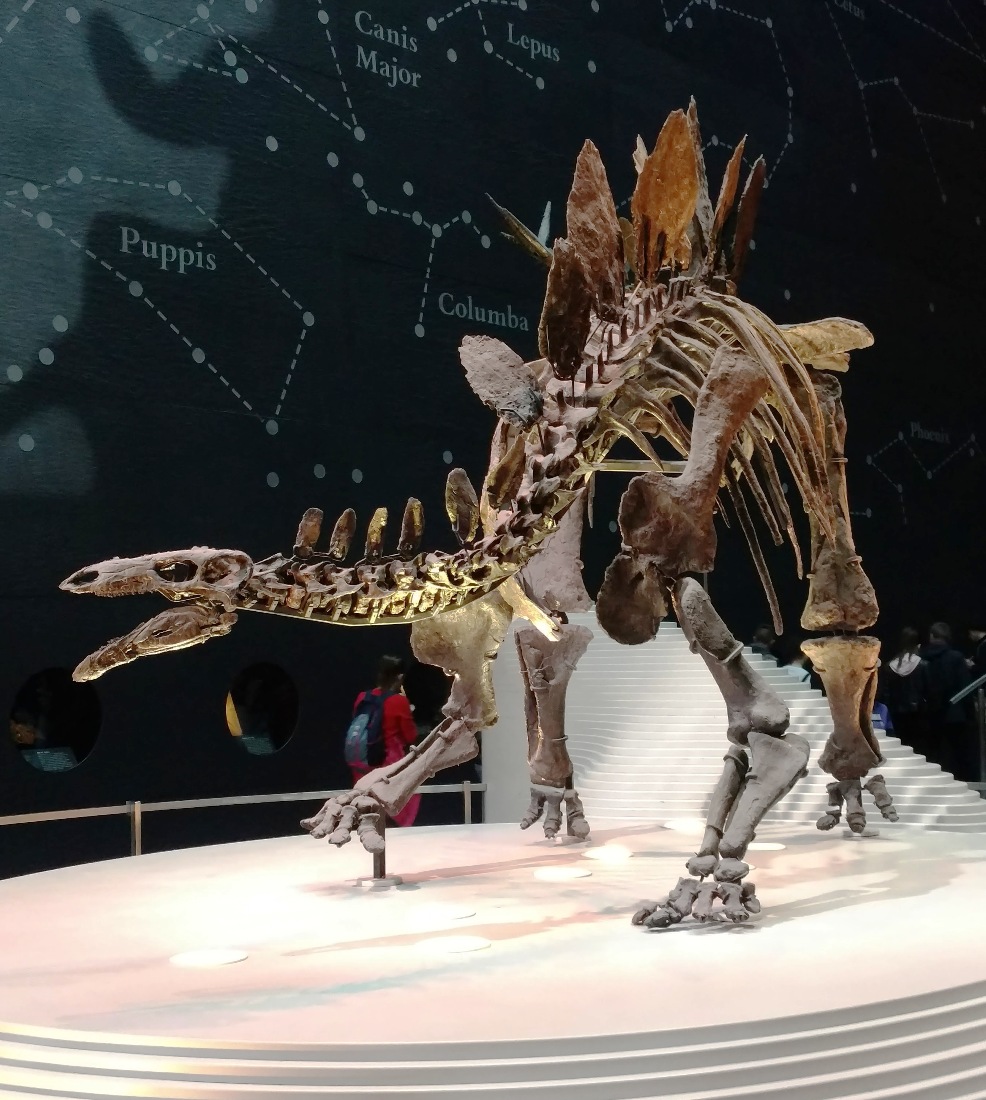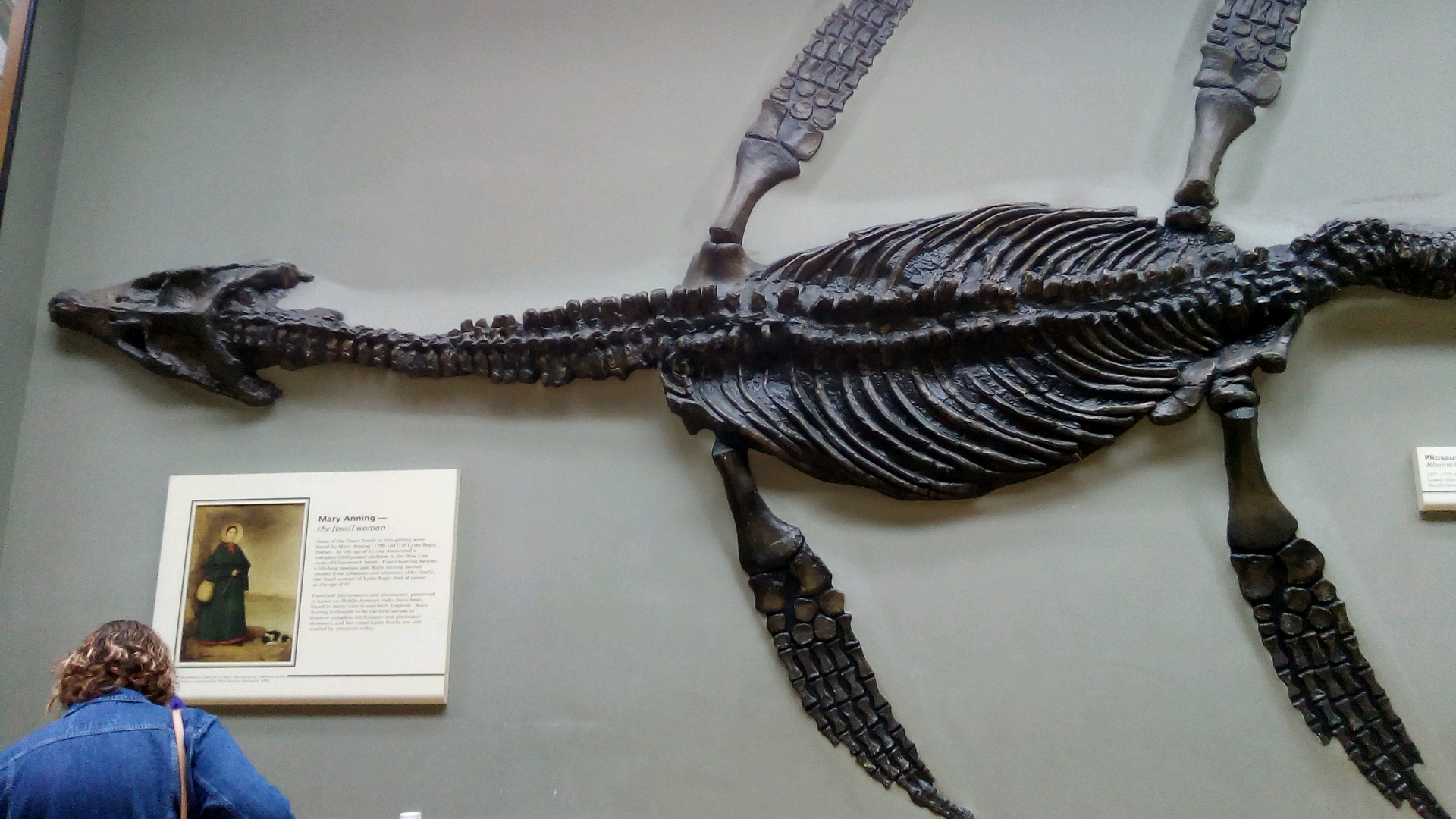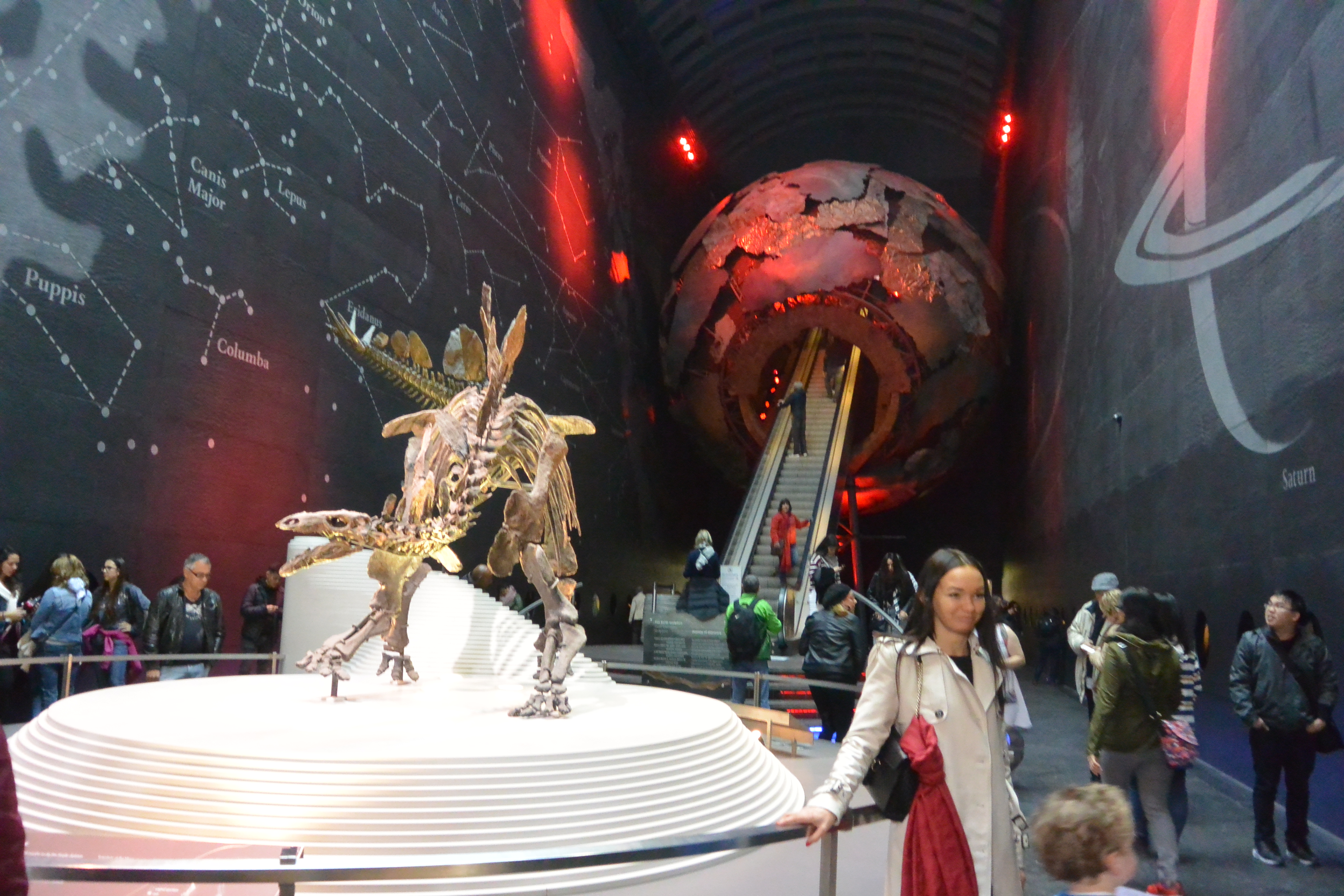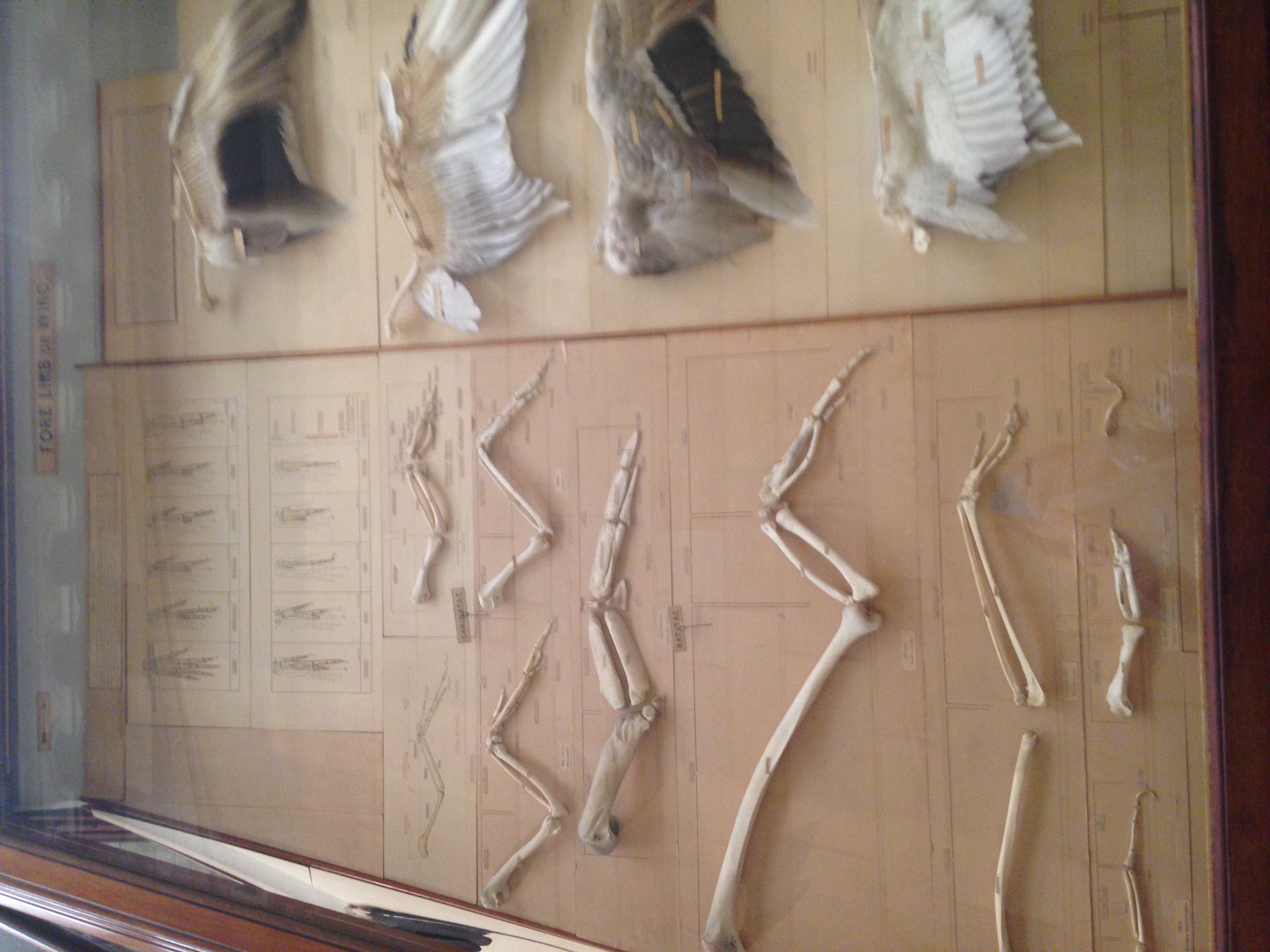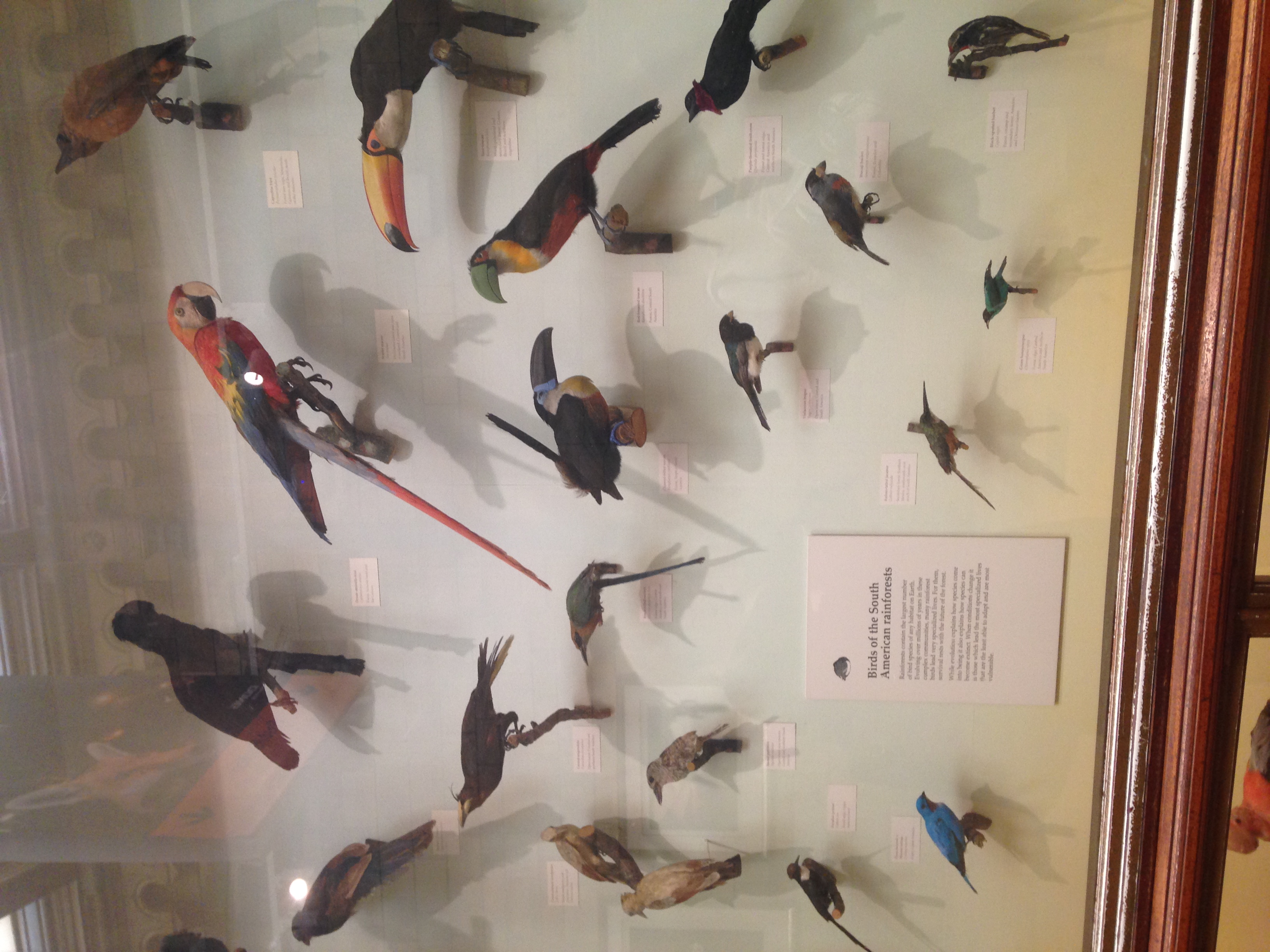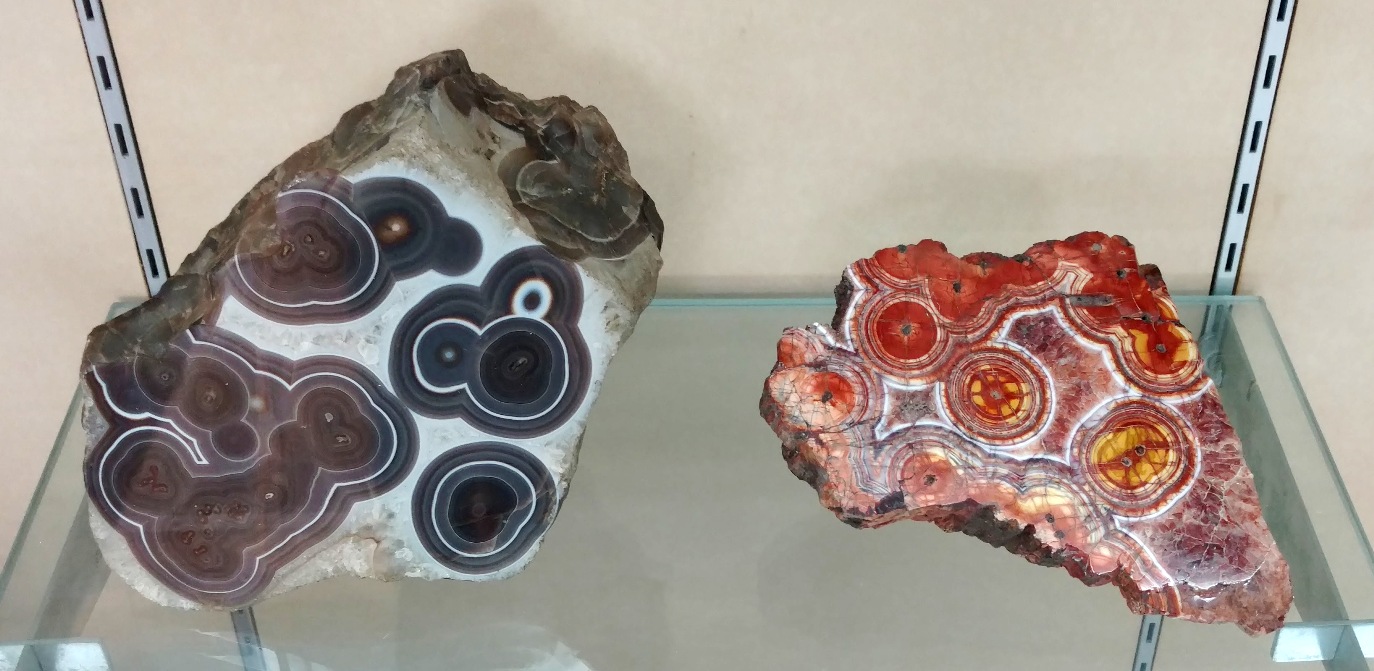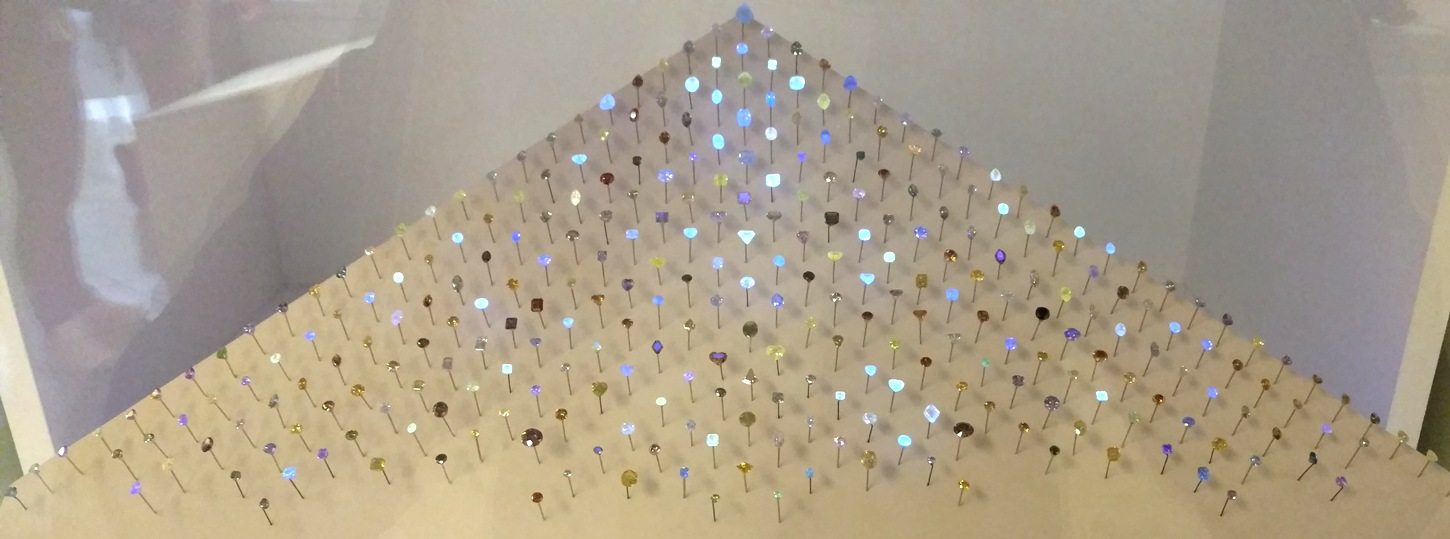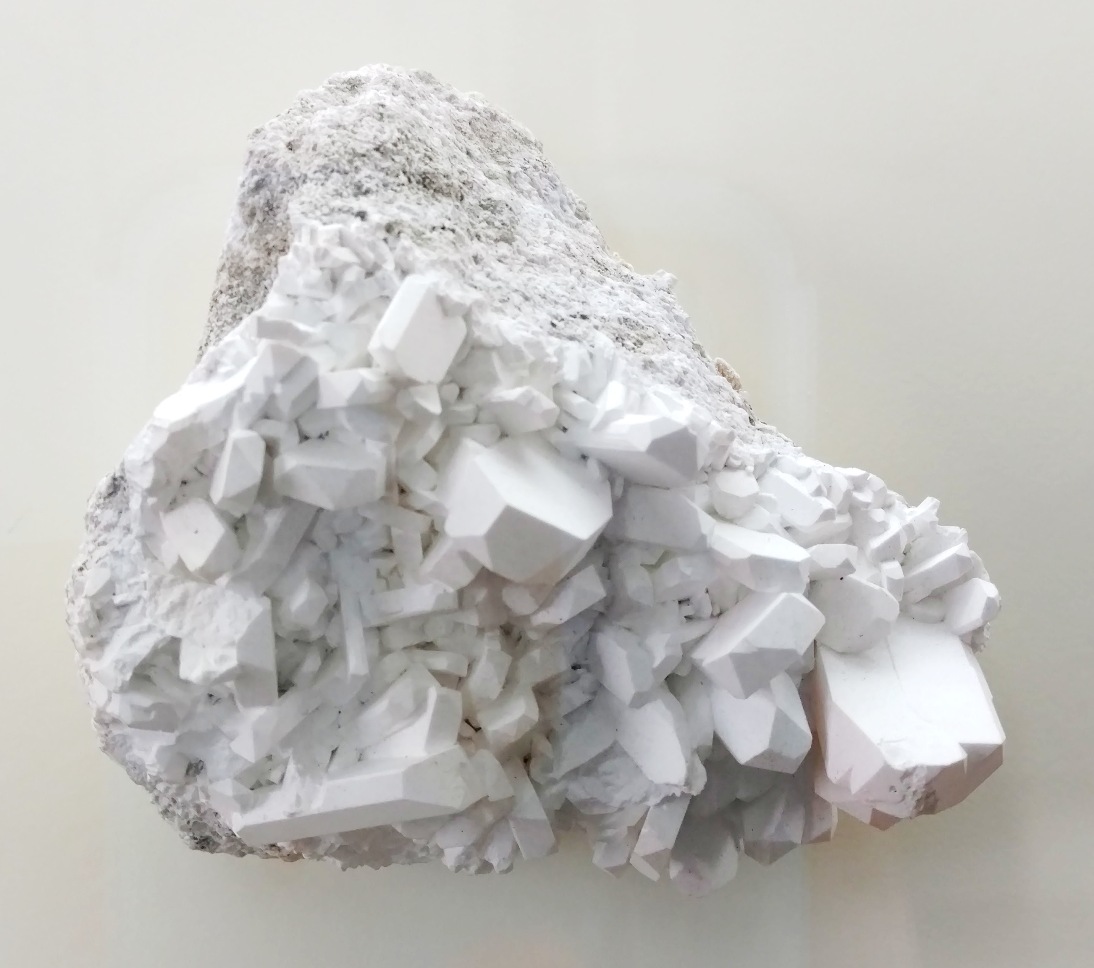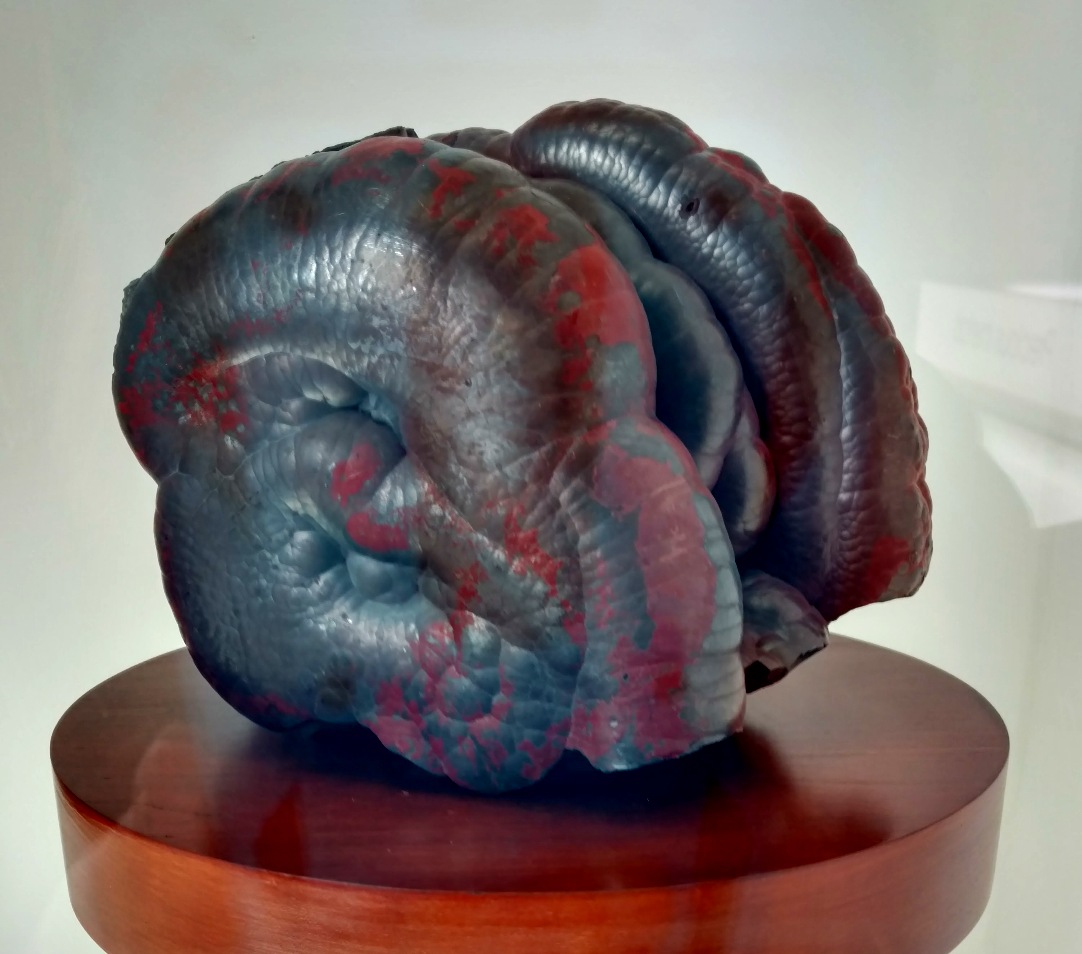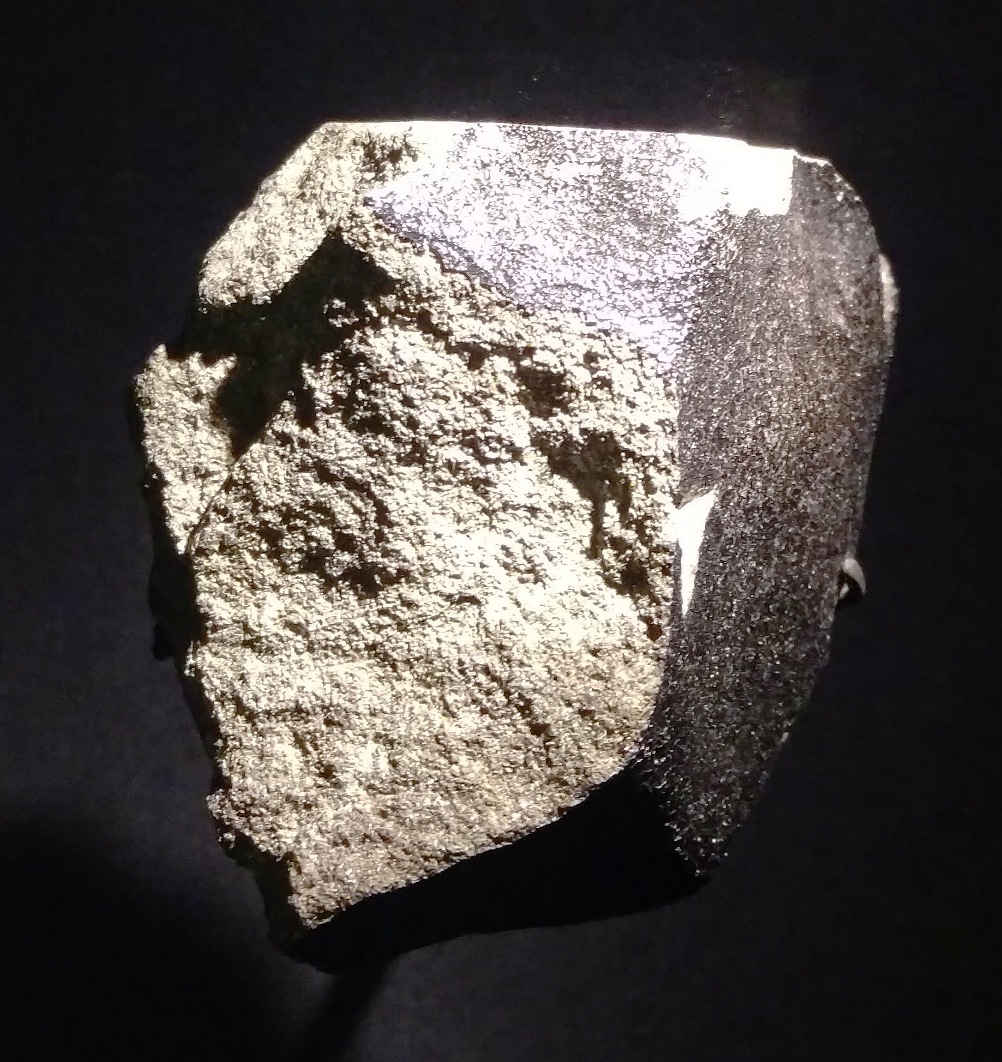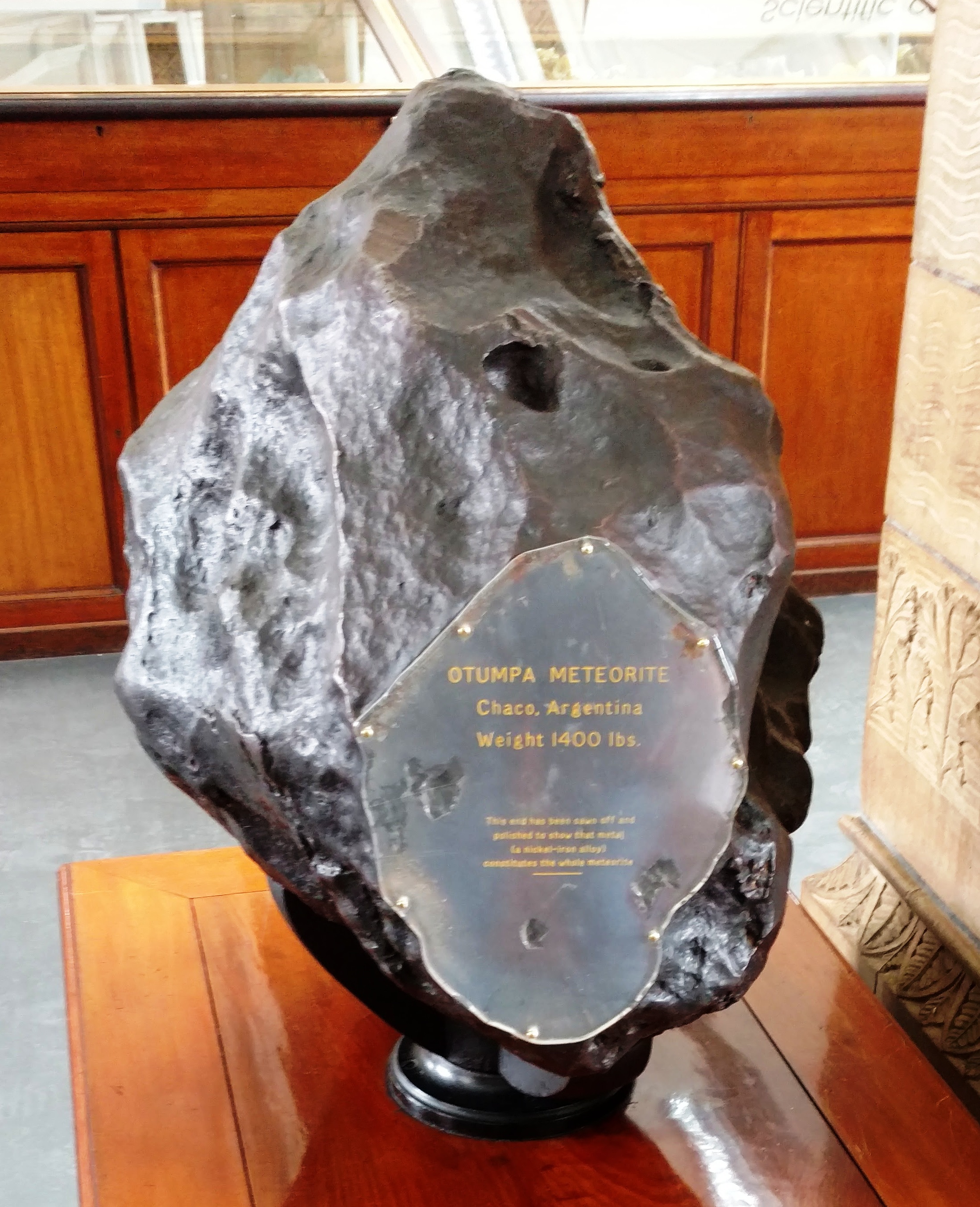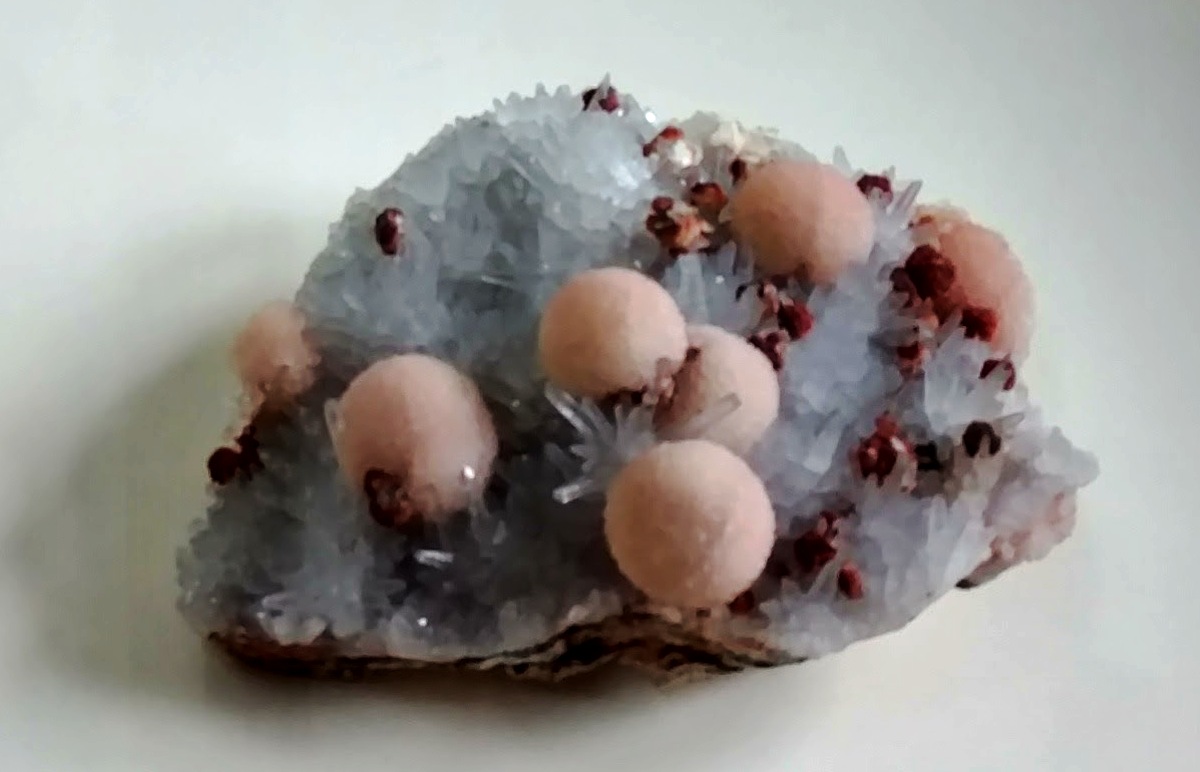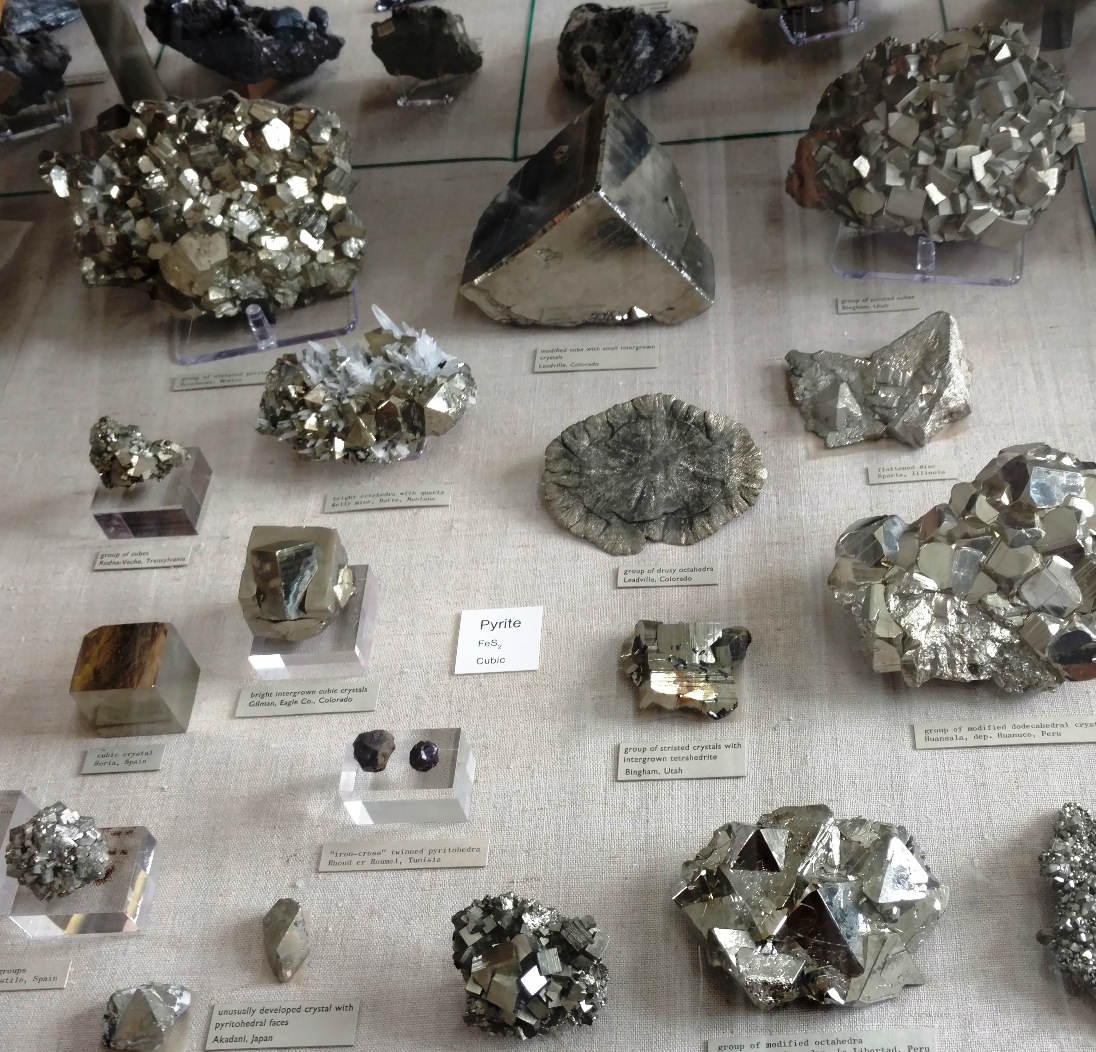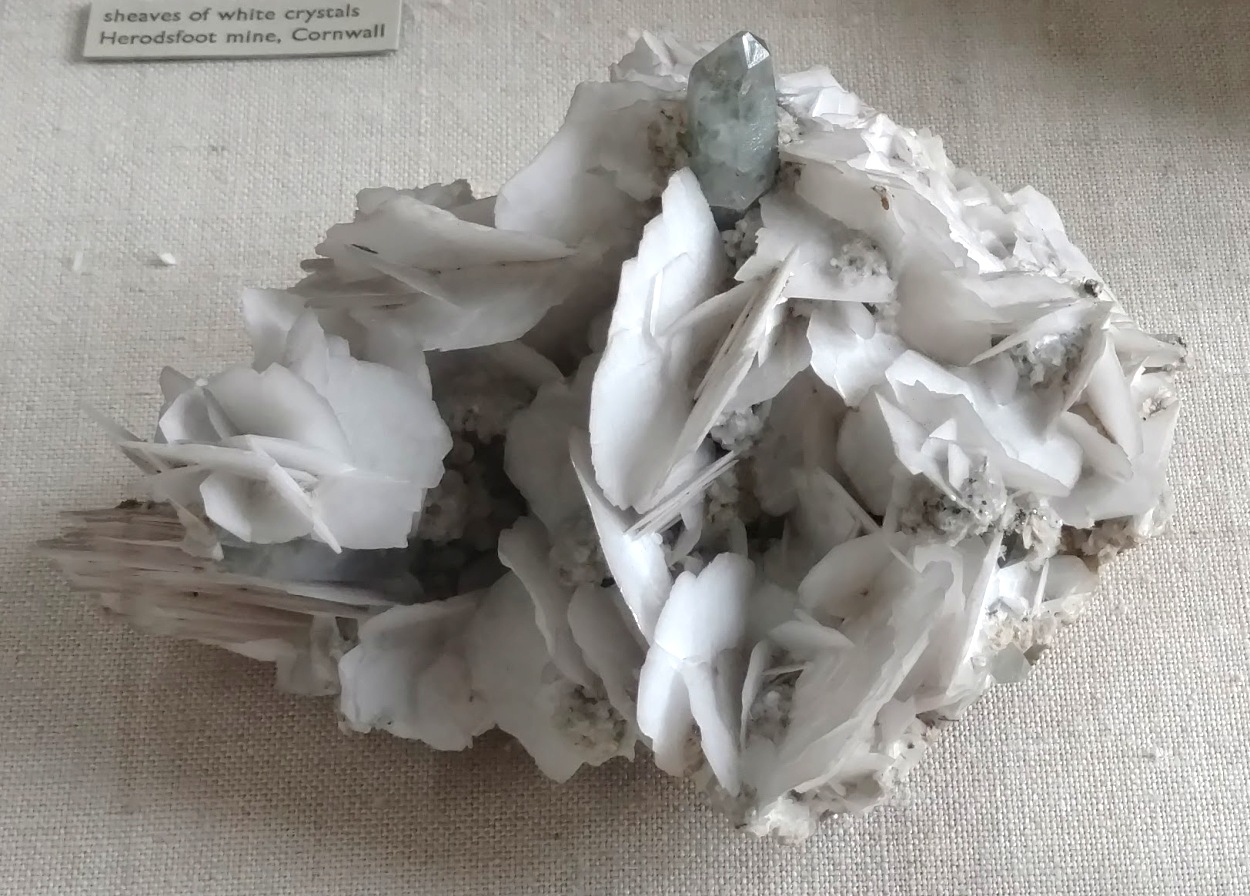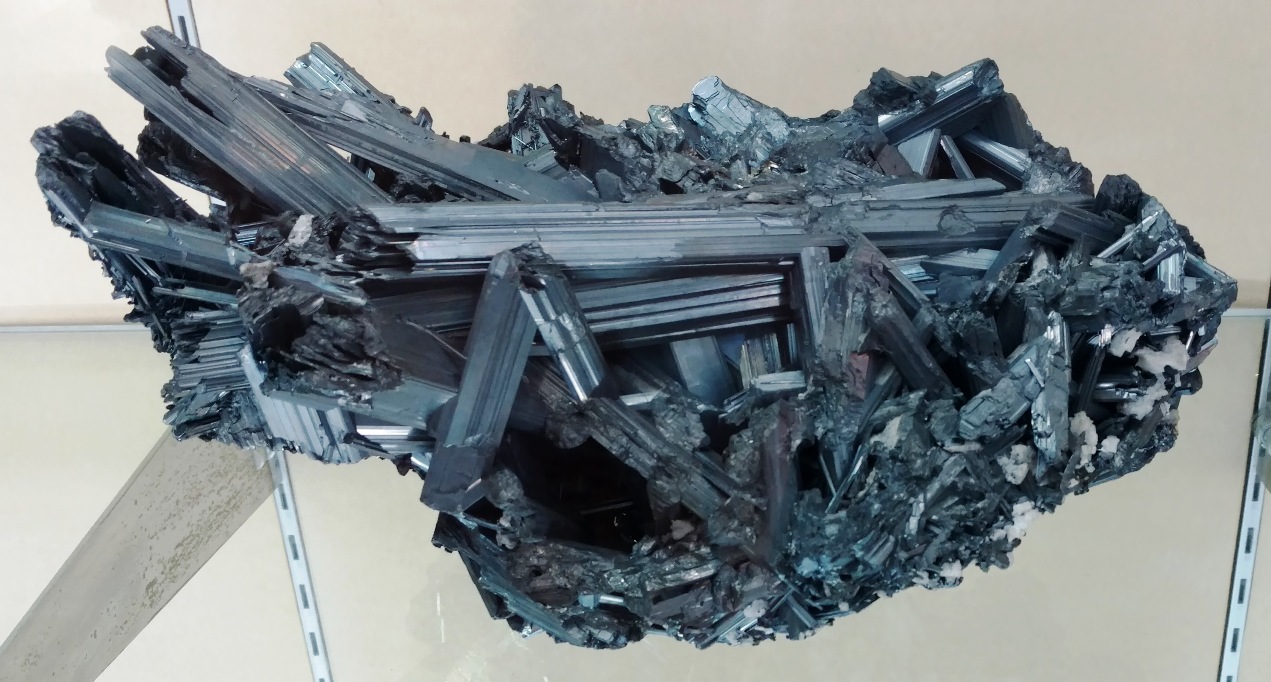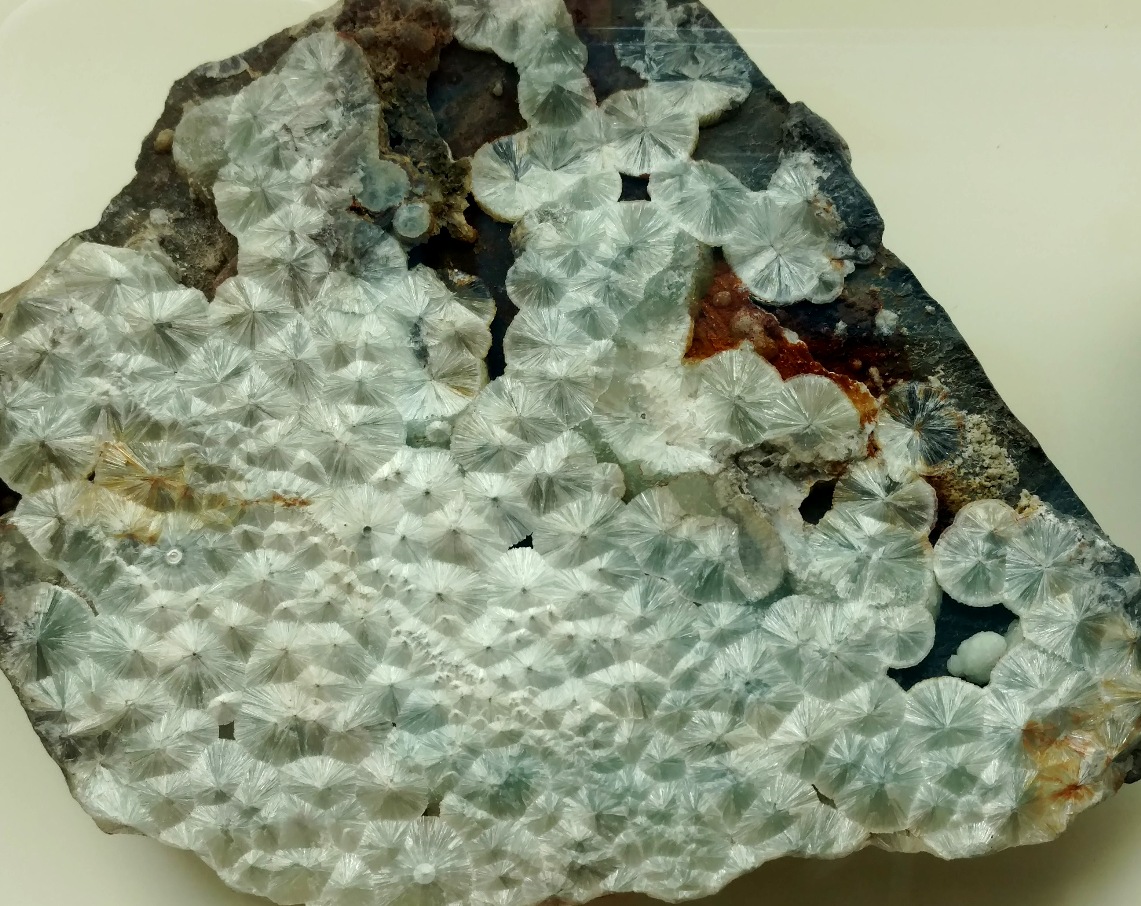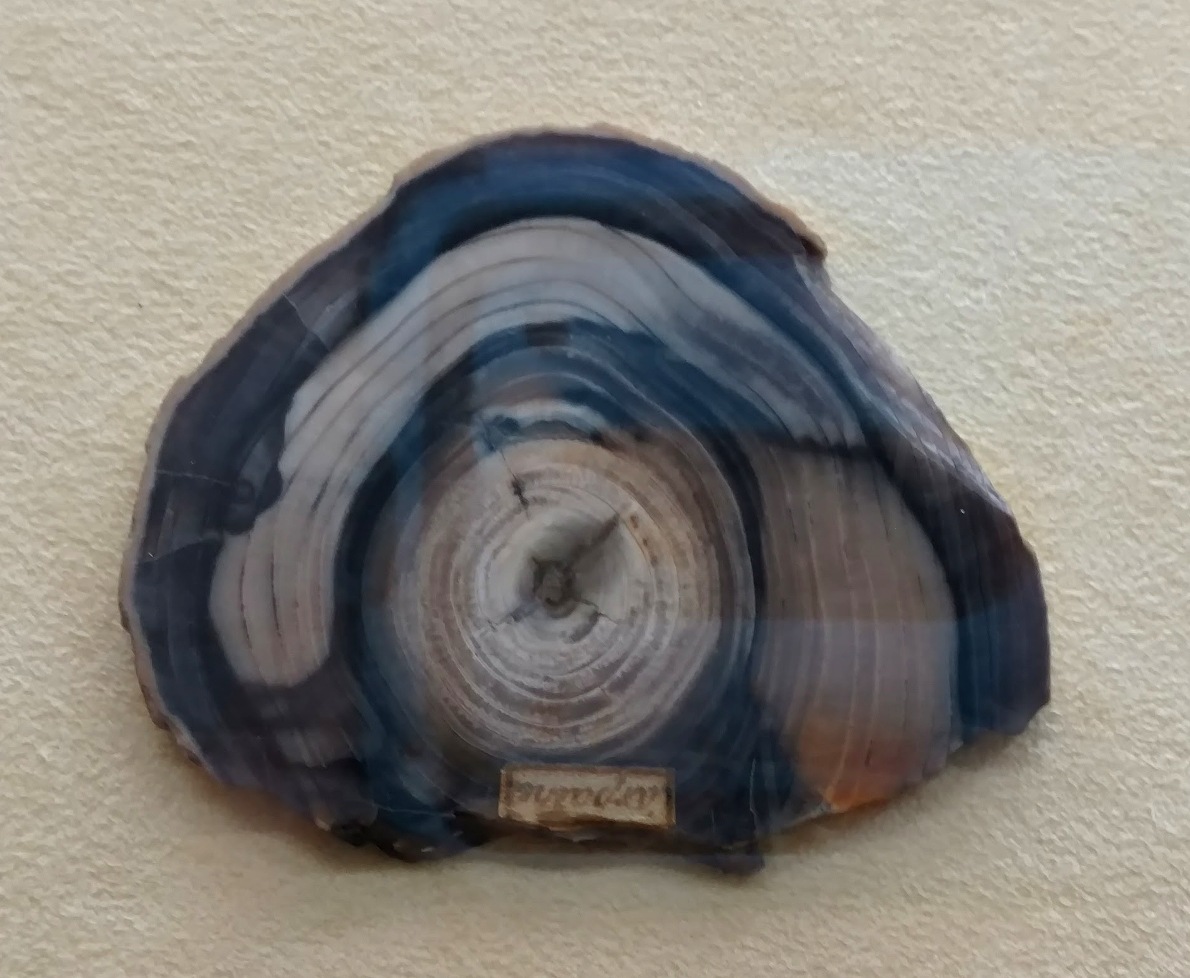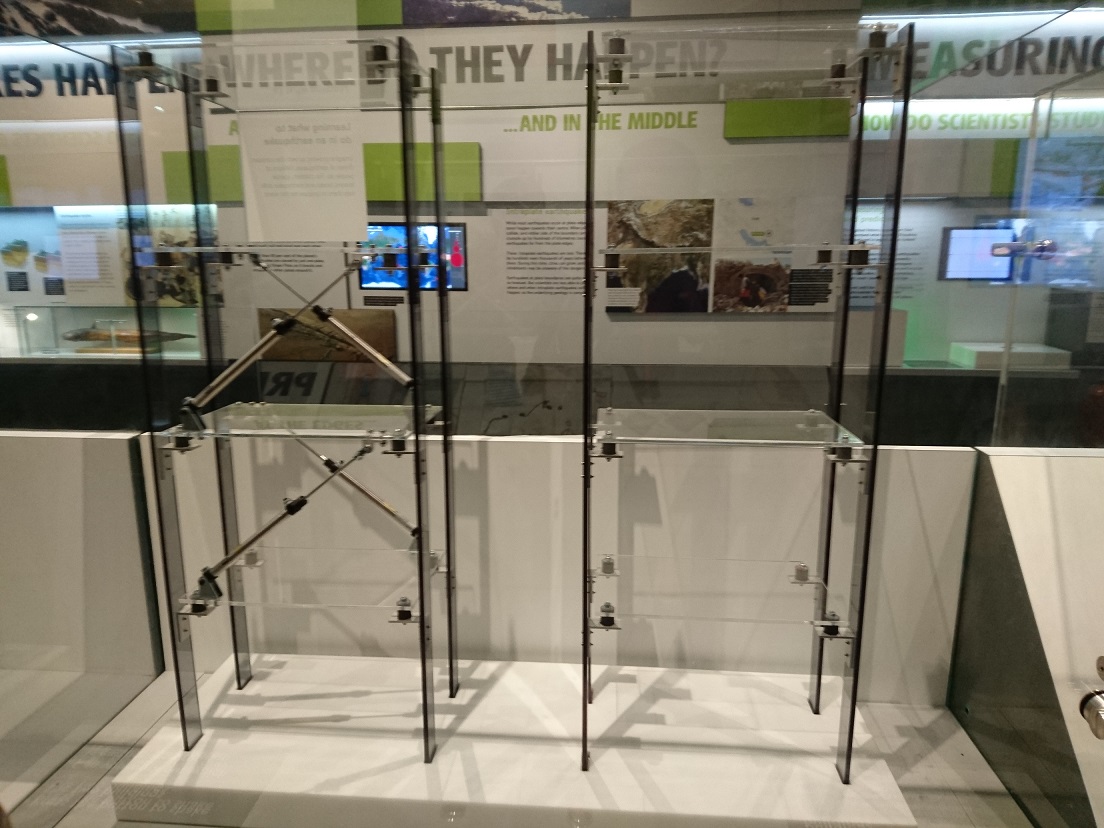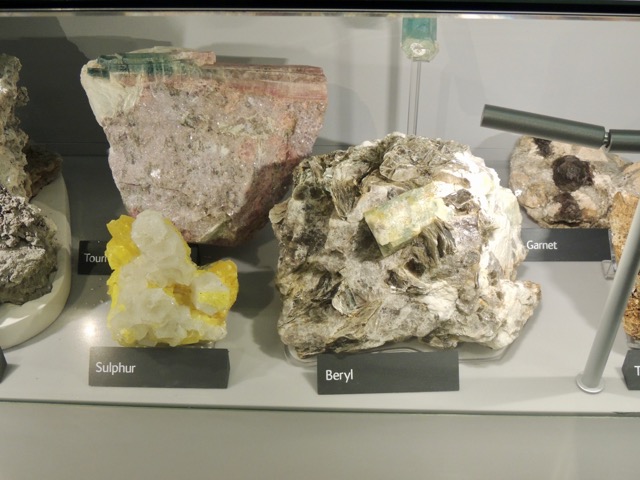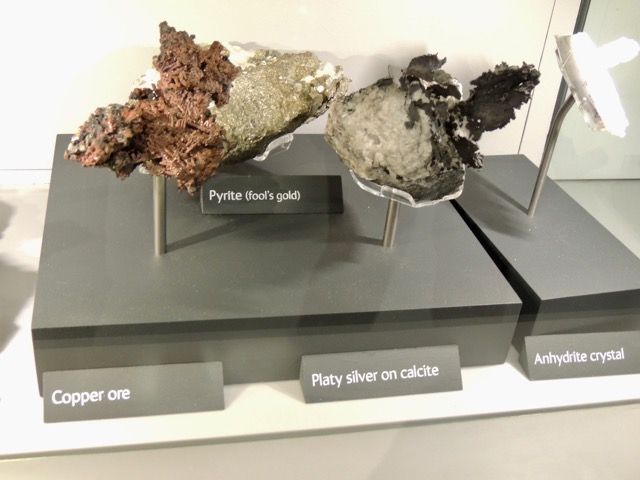Difference between revisions of "Natural History Museum"
From Londonhua WIKI
Mthatfalvi (talk | contribs) |
|||
| (82 intermediate revisions by 17 users not shown) | |||
| Line 17: | Line 17: | ||
=Background= | =Background= | ||
<br> | <br> | ||
| − | The Natural History museum was opened in 1881 and is located in central London. It was officially known as the British Museum(Natural History) until 1992, even though it was fully separated from the [[British Museum]] in 1963. | + | The Natural History museum was opened in 1881 and is located in central London. It began when Parliament purchased Sir Hans Sloane's collection of 71,000 items for £20,000. In 1986 it merged with the Geological Museum of the British Geological Survey and took in its collection of 30,000 minerals. It was officially known as the British Museum(Natural History) until 1992, even though it was fully separated from the [[British Museum]] in 1963. <ref>History and Architecture of the Natural History Museum. (n.d.). Retrieved May 12, 2017, from http://www.nhm.ac.uk/about-us/history-and-architecture.html</ref> |
<br><br> | <br><br> | ||
==Exhibits== | ==Exhibits== | ||
The Natural History Museum in London has many permanent exhibits as well as some temporary exhibits. Some of the current and upcoming temporary exhibits are the exhibits featuring the wildlife photographer of the year and one dedicated to the blue whale. The following sections of this page are dedicated to the permanent exhibits of the museum. | The Natural History Museum in London has many permanent exhibits as well as some temporary exhibits. Some of the current and upcoming temporary exhibits are the exhibits featuring the wildlife photographer of the year and one dedicated to the blue whale. The following sections of this page are dedicated to the permanent exhibits of the museum. | ||
<br><br> | <br><br> | ||
| + | |||
| + | [[File: Complete Triceratops- sm- JR.jpg|x235px|right|thumb| Complete Triceratops]] | ||
===Dinosaur Exhibit=== | ===Dinosaur Exhibit=== | ||
The Natural History museum is home to a multitude of dinosaur fossils and information. The museum contains the first fossil ever found from a Tyrannosaurus rex and other interesting archaeological discoveries like the tail club of a Euoplocephalus and a complete Triceratops. | The Natural History museum is home to a multitude of dinosaur fossils and information. The museum contains the first fossil ever found from a Tyrannosaurus rex and other interesting archaeological discoveries like the tail club of a Euoplocephalus and a complete Triceratops. | ||
| Line 31: | Line 33: | ||
==== Prehistoric creatures still around today ==== | ==== Prehistoric creatures still around today ==== | ||
| − | Today | + | Today many go to The Natural History Museum to see the remnants of extinct dinosaurs, however, one can still see the ancestors of these amazing creatures. Due to the ever-changing world around them, many dinosaurs either had to adapt to the changes of the world around them or perish. An example of this would be the Tyrannosaurus Rex, which is a distant relative of today’s birds. Through new discoveries, researchers are convinced that the modern day bird has lineage with the theropod, bipedal, dinosaurs. This all began in the 1960’s when the Deinonychus, a relative of the T-Rex, was discovered. The animatronic Deinonychus in the Dinosaurs gallery highlighted the feathery and bird-like qualities, which shows the missing link between the T-Rex and bird. So the next time you are eating chicken, think that you are eating a relative of the king of the dinosaurs. |
<br><br> | <br><br> | ||
==== Prehistoric Sea Dinosaurs ==== | ==== Prehistoric Sea Dinosaurs ==== | ||
| − | + | Dinosaurs did not only exist on land, they also had homes in the sea. The Natural History Museum contains a large collection of complete Fossil Marine Reptiles including the well-known pliosaurs and ichthyosaurs. | |
<br><br> | <br><br> | ||
| − | ===== | + | [[File: fishy.png|x235px|right|thumb| Pliosaurs]] |
| − | + | ===== Pliosaurs (''Rhomaleosaurus cramptoni'')===== | |
| − | + | The Pliosaur was one of the largest sea dinosaurs in the Lower Jurassic, stretching greater than 15 meters long. This powerful swimmer had a diet mostly composed of other plesiosaurs, ichthyosaurs and fish. The one located in the museum has is dated to be around 187-178 million years old and was discovered in Kettleness, near Whitby, Yorkshire by Mary Anning. <ref> How dinosaurs evolved into birds. (n.d.). Retrieved May 11, 2017, from http://www.nhm.ac.uk/discover/how-dinosaurs-evolved-into-birds.html </ref> | |
| + | <ref> Smith, D. (1993, November 4). Theropod Dinosaurs. Retrieved May 11, 2017, from http://www.ucmp.berkeley.edu/diapsids/saurischia/theropoda.html </ref> | ||
<br><br> | <br><br> | ||
| + | ===== Ichthyosaurus===== | ||
| − | |||
| − | |||
<br><br> | <br><br> | ||
| Line 53: | Line 55: | ||
===Space Exhibit=== | ===Space Exhibit=== | ||
The space exhibit reflects our current knowledge of how the universe works. It discusses planetary change, solar systems, and graphics on the future of our universe. The graphics help to give an accurate timeline of historical events to show the magnitude of the span of the universes' history. The events go as far back as 2,500 million years ago. It discusses climate change and what affects it. | The space exhibit reflects our current knowledge of how the universe works. It discusses planetary change, solar systems, and graphics on the future of our universe. The graphics help to give an accurate timeline of historical events to show the magnitude of the span of the universes' history. The events go as far back as 2,500 million years ago. It discusses climate change and what affects it. | ||
| + | <br><br> | ||
| + | ===Avian Exhibit=== | ||
| + | This exhibit contain models of different kinds of birds, including the dodo, owls, swans, and many others. It also contains information on how the wings feathers and feet relate to the bone structure and are all attached. It has how evolution and each birds need have shaped there beaks and how bird hear, giving the location of an owl's ear which is not the two ruffs of feathers on the top of its head. | ||
| + | <gallery mode="packed"> | ||
| + | Image:Avian Exhibit 1.JPG|''Wing construction'' | ||
| + | Image:Avian Exhibit 3.JPG|''Some of the many bird models'' | ||
| + | </gallery> | ||
<br><br> | <br><br> | ||
| Line 68: | Line 77: | ||
===Minerals & The Vault=== | ===Minerals & The Vault=== | ||
The minerals exhibit showcases a large variety of minerals and The Vault holds some of the rarer specimens. Minerals are abiotic, naturally occurring substances that have a definitive chemical composition containing one or more elements arranged in a crystalline structure. While most minerals form into crystals, interference from a crystal's surrounding can prevent proper development. The best crystals are formed where the crystal has proper space to grow. Such crystals posses one or more forms of symmetry. These forms are symmetry about a plane, about an axis and about the center. These forms of symmetry can then be used to further classify the crystal. Some types of crystals have a typical shape it takes on, this is called its habit. They can also be color specific or appear in multiple colors. Within this exhibit everything from iron to pyrite to quartz to gold can be seen. In addition, there are some more unique artifacts. There is part of the Otumpa Meteorite on display. The meteorite is comprised of iron, was found in Chaco, Argentina and weighed 1400 lbs altogether. There are two rare meteorites from Mars. Lastly, the Aurora Pyramid of Hope contains 296 diamonds displaying the full range of naturally occurring diamond colors. When displayed under black light, many of the diamonds glow. | The minerals exhibit showcases a large variety of minerals and The Vault holds some of the rarer specimens. Minerals are abiotic, naturally occurring substances that have a definitive chemical composition containing one or more elements arranged in a crystalline structure. While most minerals form into crystals, interference from a crystal's surrounding can prevent proper development. The best crystals are formed where the crystal has proper space to grow. Such crystals posses one or more forms of symmetry. These forms are symmetry about a plane, about an axis and about the center. These forms of symmetry can then be used to further classify the crystal. Some types of crystals have a typical shape it takes on, this is called its habit. They can also be color specific or appear in multiple colors. Within this exhibit everything from iron to pyrite to quartz to gold can be seen. In addition, there are some more unique artifacts. There is part of the Otumpa Meteorite on display. The meteorite is comprised of iron, was found in Chaco, Argentina and weighed 1400 lbs altogether. There are two rare meteorites from Mars. Lastly, the Aurora Pyramid of Hope contains 296 diamonds displaying the full range of naturally occurring diamond colors. When displayed under black light, many of the diamonds glow. | ||
| + | <gallery mode=packed> | ||
| + | File:Agate- sm- JR.jpg|Agate | ||
| + | File:Aurora Pyramid of Hope- sm- JR.jpg|Aurora Pyramid of Hope | ||
| + | File:Borax- sm- JR.jpg|Borax | ||
| + | File:Kidney Stone (Hematite)- sm- JR.jpg|Kidney Stone (Hematite) | ||
| + | File:Mars Rock- sm- JR.jpg|Mars Rock | ||
| + | File:Otumpa Meteorite- sm- JR.jpg|Otumpa Meteorite | ||
| + | File:Pink Calcite Showing Globular Aggregates- JR.jpg|Pink Calcite Showing Globular Aggregates | ||
| + | File:Pyrite- sm- JR.jpg|Pyrite | ||
| + | File:Schiefer Spar- sm- JR.jpg|Sciefer Spar | ||
| + | File:Stibnite- sm- JR.jpg|Stibnite | ||
| + | File:Wavellite- sm- JR.jpg|Wavelite | ||
| + | File:Wood Opal- sm- JR.jpg|Wood Opal | ||
| + | </gallery> | ||
| + | ====Building Materials==== | ||
| + | As a subsection of the Minerals & The Vault area, this particular display focuses on the building materials used in England and the neighboring areas and how they have evolved over time. It begins with the heritage of Britain's stone work that is actually a variety of types of stone ranging from limestone to granite to gabbros, and the fact that builders would be limited to their local raw materials. It then progresses into the use of stone as a decorative pieces in the construction of major public and private works. Te next material to be focused on is brick, which the English gained the knowledge of brick creation from the Romans. Clay is made into brick by adding a specific amount of water and firing the clay until it becomes firm, as a result of a chemical change. Up until the twenty-first century brick had been the main building material in England, now it has been replaced by concrete. Cement was a Roman invention that has the ability when mixed with water and then dried, it becomes as hard a rock. The solidification of concrete to become a string matrix can take several years as the chemical change takes time. Concrete is a derivation of cement that has been mixed with gravel and sand to add stability to the mixture. In addition to concrete being used in today's buildings steel bars have been added for reinforcement to the material an strengthening the overall structure. Modern buildings have emphasized the use of glass, that based on its composition and manufacturing can become stronger than concrete offering light and insulation that concrete would not provide. | ||
<br><br> | <br><br> | ||
| + | |||
===Human Evolution=== | ===Human Evolution=== | ||
| − | claimed | + | Human Evolution is a new exhibit in the Natural History Museum. According to the Natural History Museum website, the gallery designer was Jenny Wong.<ref name = "nat">The origin of our species. (n.d.). Retrieved May 11, 2017, from http://www.nhm.ac.uk/discover/the-origin-of-our-species.html</ref> The Gallery goes through the development and change of human evolution starting from 7 million years ago with ''Sahelanthropus tchadensis'', which is the earliest species of Early Hominins.<ref name = "nat"/> According to the British Museum of Natural History's website on Human Evolution our origins of Homo sapiens starts from our closest relatives, the chimpanzees and the bonobos.<ref name = "nat"/> The exhibit features the story of Early Homo sapiens originating from Africa and then eventually spreading across Europe to modern humans we see today.<ref name = "nat"/> The oldest hominin fossil in the Museum's collection is a 3.5-million-year-old Laetoli canine belonging to the species ''Australopithecus afarensis''.<ref name = "nat"/> The famous Lucy, ''Australopithecus afarensis'', is replicated and can be shown in the exhibit. The exhibit also features nine other kinds of human species such as ''Homo habilis'', ''Homo rudolfensis'', ''Homo erectus'', ''Homo antecessor'', ''Homo heidelbergensis'', ''Homo floresiensis'', ''Homo neanderthalensis'', ''Homo naledi'', and ''Denisovans''.<ref name = "nat"/> |
| + | <br><br> | ||
| + | |||
| + | ==Volcanoes and Earthquakes== | ||
| + | Volcanoes and earthquakes have shaped the surface of the Earth for billions of years. These events are caused by the heat of the Earth's core, which moves the tectonic plates on the surface. Volcanoes and earthquakes bring death and destruction, but also produce minerals people depend on.This exhibit is located in the Red zone of the museum along with all the exhibits that focus on the past and evolution. By doing research and studying them, scientist are able to understand how they work and how to prevent casualties. The exhibit has interactive actives and information filled plaques about what causes earthquakes and volcanoes, places that were effected by volcanoes and earthquakes and preventive measures to stay safe in the event one of these may occur. There is a portion of the exhibit on Mount Vesuvius where there are casts of the victims from the eruption of AD 79. One activity was to experience the Great Hanshin earthquake of 1995 in Japan that claimed around 6,500 lives. This earthquake was a wake-up call to Japan and today their architecture is more suited for major earthquakes.<ref>"Volcanoes And Earthquakes | Natural History Museum". Nhm.ac.uk. N.p., 2017. Web. 11 May 2017.</ref><br> | ||
<br><br> | <br><br> | ||
| − | === | + | ===Measuring and Predicting=== |
| − | + | Throughout history people have tried to understand what causes earthquakes. Some believed in legend, others looked for scientific fact. Our modern understanding of earthquakes has only developed relatively recently. During the 1800s, scientists developed instruments to measure the size and location of the eathquakes, called seismometers. But their exact cause was still unclear. It was not until the 1960s that scientists finally discovered the link between earthquakes and the movement of plates. | |
| + | <br> | ||
| + | When an earthquake happens pulses of energy called seismic ways travel through the ground. Generally speaking there are two different kinds. Primary, or P waves, are fast and can move through solids and liquids, any part of Earth's interior. They are the first waves detected by seismometers and cause relatively little damage. Secondary, or S waves, are slightly slower and can only move through solids. But they cause more damage. | ||
| + | <br> | ||
| + | During the 1960s the World-Wide Standardised Seismic Network was set up. Initially used to detect the faint echoes of Russian nuclear tests during the Cold War, the network of seismometers also detected earthquakes around the world, leading scientists to develop the theory of continental drift and plate tectonics. | ||
| + | <br> | ||
| + | The Gray-Mine seismograph was made by James White of Glasgow in 1885. It was designed by Thomas Gray and John Milne while they were both studying earthquakes in Japan. Milne is regarded as the founding father of seismology. The machine ran continuously, recording traces with three pens on one roll of paper. | ||
| + | <br> | ||
| + | Scientists had no standard way to compare earthquakes until 1935 when Charles Richter developed his famous Ritcher scale. The scale runs up to 10. It is logarithmic, so an increase of one point on the scale means the size of the seismic wave increase 10 times. Most earthquakes have a small magnitude and may not even be felt. Larger ones are rarer, but can cause more damage depending on how close they are to people and how close they are to people and how prepared those people are. | ||
| + | <br> | ||
| + | Predicting which areas of the world will experience the most earthquakes is possible. Scientists make these predictions by looking at how often and how large earthquakes have been in certain areas in the past. They can then calculate that a place such as California will experience one large earthquake about every 100 years. But exactly when an earthquake will happen is more difficult to calculate. Earthquakes are too sudden and complex to predict precisely. One thing we do know is they happen at plate boundaries, so some believe the best way to reduce their impact is to just be prepared. | ||
| + | |||
| + | <br><br> | ||
| + | ====Earthquake Safety==== | ||
| + | |||
| + | While the museum is teaching about what has happened, it's dual goal is how to teach people to be prepared of what might come, including Earthquakes. Here are six different locations one might find themselves during an earthquake and the safety tips! <br> | ||
| + | <br> | ||
| + | A. In bed:<br> | ||
| + | Stay in bed, and use your pillow to cover your face. When it is safe, get up, put on shoes (which should be kept beside your bed) to protect your feet from stepping on anything and help with stabilizing yourself. Other tips for inside your house included making an emergency kit for your pets and identify a trusted neighbor who can check on them if a disaster strikes when you're not home. Keep a flashlight under your bed, so if the earthquake strikes at night you have light to see still. Turn off your gas only if you suspect a lear or are instructed to do so. Make sure to keep 13 liters of water per person and keep a first aid kit in the house. And from the beginning, make sure to move beds away from windows, mirrors or framed pictures. All heavy objects too showed be tied down. Lastly, if you need to communicate after an earthquake, texting may be more reliable than trying to make a phone call as lines may be busy.<br> | ||
| + | <br> | ||
| + | B. In Car: <br> | ||
| + | If you are driving an an earthquake hits, stay inside the vehicle until the shaking is over. Find a news source, on the radio or on your phone. If a power line falls on the car, stay in your car and wait for help. You might hear an outdoor public warning system, again turn to your news source for more information. It is good to register with your local authorities to receive post-disaster emergency information to your cellphone. It is always a good idea to keep an emergency kit in your car too and to try to keep your fuel tank at least half full, since gas stations may be closed if the electricity gets knocked out. <br> | ||
| + | <br> | ||
| + | C. At the Beach: <br> | ||
| + | If you see the water rapidly receding, move immediately to high ground. A strong earthquake centered off the coast can cause a tsunami. When you feel the shaking, make sure to stop drop, cover your head and hold on until it stops. While exploring the beach, before a strike, take notice of any posted tsunami evacuation routes. If you hear the tsunami warning system, go to the higher ground and tune into a news station for instructions. <br> | ||
| + | <br> | ||
| + | D. At Work: <br> | ||
| + | When you first feel the earthquake, get under a nearby desk or table and hold on until the shaking stops. Make sure to cover your head with at least your hands. Then access your surroundings and before helping others, check yourself for injuries. Follow your building's emergency procedures. Only call the emergency line if you have a life-threatening emergency. If anyone is in a wheel chair at your office, make sure they lock their brakes and they too cover their heads with their hands. You should always remember to keep a pair of sturdy shoes and a dust mask in your work emergency kit so it can be easily reached. Secure all heavy objects which could cause injury or block exits, ie file cabinet. Always use the stairs to exist, avoid using the elevator after and earthquake. <br> | ||
| + | <br> | ||
| + | E. In Commute (ie The Tube):<br> | ||
| + | If you find yourself on the tube during an earthquake, remain in your seat and protect your head and neck with your arms. Assess your surroundings and wait for evacuation instructions from train operators. If you need to communicate, it is best to text since lines could be busy. It is also helpful to keep pictures of family members and the ones you may be traveling with on your phone so it can be easier to reunite with them after a disaster. Always be aware of the posted emergency instructions during any and all of your commutes. <br> | ||
| + | <br> | ||
| + | F. At a Restaurant: <br> | ||
| + | First, get under a nearby table and hold on until the shaking stops. Exit your table slowly, watching for falling objects such as windows, bricks, and building facades. Prior too the earthquake though, it is good to always carry some cash since the cash machines may be out. It is also helpful to create a family emergency plan in case your members are separated during an earthquake so everyone knows where to find each other. <br> | ||
| + | <br> | ||
| + | |||
| + | =====Earthquake Technology===== | ||
| + | The museum also showcase's an actual earthquake room that people could enter. This room creates a simulation of an earthquake in a department store that allows people feel an actual earthquake. Exiting the room, there are models on display that show earthquake resistant buildings. One of the model was a regular building and the other was an earthquake resistant building with pistons in the wall. Both of the models were put through an earthquake simulation that showed how the new technology can prevent large damage to buildings during an earthquakes. The pistons seemed to absorb most of the earthquake vibrations which prevented violent shaking compared to the normal building model. | ||
| + | <gallery mode=packed> | ||
| + | File:Earthquake model.JPG|Models | ||
| + | </gallery> | ||
| + | |||
| + | |||
| + | <br> | ||
| + | <br> | ||
| + | |||
====Krakatoa==== | ====Krakatoa==== | ||
| − | + | Krakatoa was a volcano in Indonesia that exploded in 1883 with the force of thousands of atomic bombs. The island that the volcano was located blew itself apart and it was heard from Australia, which was more than 3,000 kilometers away. Because of the collapse of the volcano, there were a series of great waves, which lead to a tsunami. Many costal towns and villages were damaged and destroyed and many people died from thermal injures of the blasts. The death toll was more than 36,000 people. Since the smoke blocked the sun, Europe and the United States had failed crops in the summer. In 1927, a small volcano began to grow in the place of the old volcano called Anak Krakatoa and it continues to erupt every so often. <ref>Science, Live. "Krakatoa Volcano: Facts About Deadly Eruption". Live Science. N.p., 2017. Web. 11 May 2017.</ref> | |
| + | <br><br> | ||
====Great Hanshin Earthquake==== | ====Great Hanshin Earthquake==== | ||
| − | + | On January 17th 1995, an earthquake stuck the Osaka-Kobe(Hanshin) metropolitan area and wreaked mass destruction ending 4,571 lives and injuring 14,000 people. Much of the infrastructure was destroyed including portions of the Hanshin Expressway as well as thousands of homes and businesses. This earthquake was a warning sign to Japan about the lack of earthquake ready infrastructure. It alerted the government to the fact that the new building codes were not enough to save the buildings from total collapse. The government was more prepared for the next earthquake<ref>"Kobe Earthquake Of 1995 | Japan". Encyclopedia Britannica. N.p., 2017. Web. 11 May 2017.</ref> | |
<br><br> | <br><br> | ||
| + | |||
| + | ====Mount Vesuvius==== | ||
| + | Mount Vesuvius is located in the Gulf of Napes in Campania, Italy. It is also the only active volcano in mainland Europe even though it is one of several volcanoes which form the Campanian volcanic arc. The area around Mt. Vesuvius is the most densely populated volcanic region in the world making it one of the most dangerous volcanos in the world. This volcano was formed by the collision of the African and Eurasian tectonic plates and has erupted many times throughout history. It is suspected that it has erupted 42 times since the largest in 79 AD, none of which were nearly as destructive. The last eruption being in 1944. This eruption destroyed the villages of San Sebastiano al Vesuvio, Massa di Somma, Ottaviano, and part of San Giorgio a Cremano. The volcano is best known for its eruption in 79 AD when it demolished the city of Pompeii which shot stone, ash, and gasses 33 km into the air. This eruption lead to the demise of Pompeii and left its population in casts of ash that are still around today, perfectly preserving the bodies of the victims. The volcano is closely monitored in order to prepare for future eruptions and prevent a huge natural disaster. | ||
| + | <br><br> | ||
| + | |||
| + | == The Hydrothermal Cycle== | ||
| + | |||
| + | When water i heated by magma underground it brings metals and other elements towards the surface. When it reaches the surface the water cools and deposits the minerals either in rocks or around vents that erupt. Hydrothermal systems can be active for hundreds or thousands of years depositing tons of precious minerals and metal ore. The Crystal palace is home to huge crystals that are 4 meters wide and 12 meters long. In Mexico in 1910 the cave was discovered by a group of miners who were digging for silver and lead. These caves were filled with water that had calcium and sulphate. Because the water was kept at 50 degrees C, it allowed gypsum crystals to grow very large. Between 100 and 1,00 meters underground is where you will find the formation of crystals. The different elements in magma change the color of each crystal. Different Types of crystals include the Anhydrite crystal which pictured below is a one-meter-long sword shape. Crystals can contain metals as well which is how we Pyrite. It is formed by hot water going through cooled magma, this is where it can pick up metals and deposit them elsewhere. Also pictured below is a geyser pipe, which is where hot, mineral-rich water is fired out, and many deposits of minerals can be found here. | ||
| + | <gallery> | ||
| + | [[File:EAWmineral1.jpg|400px]][[File:EAWmineral2.jpg|400px]][[File:EAWmineral3.jpg|400px]] | ||
| + | Image:EAWmineral1.jpg | ||
| + | Image:EAWmineral2.jpg | ||
| + | Image:EAWmineral3.jpg | ||
| + | </gallery> | ||
==The Darwin Centre== | ==The Darwin Centre== | ||
| Line 92: | Line 182: | ||
}} | }} | ||
The Darwin Centre is a relatively recent addition to the Natural History Museum, opening to the public in 2009. The Centre is built around a eight-story display area called the Cocoon, which houses laboratories for museum scientists, as well as 3.3 kilometers of display cabinets. The Centre holds seventeen million entomology specimens and three million botany specimens. The top three floors are gallery spaces, containing specimens brought back by Charles Darwin from the Beagle voyage. The Cocoon, measuring sixty meters long, twelve meters wide, three hundred millimeters thick, and covering three thousand five hundred square meters, is the single largest sprayed concrete curved structure in Europe <ref> Williams, R. (2009, September 14). Darwin Centre Opens to the Public. Retrieved May 10, 2017. </ref>. | The Darwin Centre is a relatively recent addition to the Natural History Museum, opening to the public in 2009. The Centre is built around a eight-story display area called the Cocoon, which houses laboratories for museum scientists, as well as 3.3 kilometers of display cabinets. The Centre holds seventeen million entomology specimens and three million botany specimens. The top three floors are gallery spaces, containing specimens brought back by Charles Darwin from the Beagle voyage. The Cocoon, measuring sixty meters long, twelve meters wide, three hundred millimeters thick, and covering three thousand five hundred square meters, is the single largest sprayed concrete curved structure in Europe <ref> Williams, R. (2009, September 14). Darwin Centre Opens to the Public. Retrieved May 10, 2017. </ref>. | ||
| + | <br><br> | ||
| + | |||
| + | ==The Museum in Popular Culture== | ||
| + | The Museum is an integral part of the 1975 film "One of Our Dinosaurs is Missing," in which a dinosaur from the Natural History Museum is stolen. It is a group of Chinese spies who steal this artifact, giving some insight into what nationality the villains of that time period were in the larger scope of film. | ||
<br><br> | <br><br> | ||
=References= | =References= | ||
1. (n.d.). Retrieved May 09, 2017, from http://www.nhm.ac.uk/ | 1. (n.d.). Retrieved May 09, 2017, from http://www.nhm.ac.uk/ | ||
| + | <references/> | ||
<br><br> | <br><br> | ||
Latest revision as of 14:19, 21 June 2017
Natural History Museum
 | |
| Natural History Museum, Main Entrance | |
|---|---|
| National History Museum, London |
Overview
The Natural History Museum is a free museum open to the public and is dedicated to teaching people about how the natural world works. The museum's exhibits focus on the past, present, and future of the natural world and humanity through science and history. The museum has many temporary exhibits as well as permanent ones. It is also the workplace of many scientists who do research on Earth and life sciences.
Contents
- 1 Natural History Museum
- 2 Overview
- 3 Background
- 3.1 Exhibits
- 3.2 Volcanoes and Earthquakes
- 3.3 The Hydrothermal Cycle
- 3.4 The Darwin Centre
- 3.5 The Museum in Popular Culture
- 4 References
- 5 External Links
- 6 Image Gallery
- 7 Category tags
Background
The Natural History museum was opened in 1881 and is located in central London. It began when Parliament purchased Sir Hans Sloane's collection of 71,000 items for £20,000. In 1986 it merged with the Geological Museum of the British Geological Survey and took in its collection of 30,000 minerals. It was officially known as the British Museum(Natural History) until 1992, even though it was fully separated from the British Museum in 1963. [1]
Exhibits
The Natural History Museum in London has many permanent exhibits as well as some temporary exhibits. Some of the current and upcoming temporary exhibits are the exhibits featuring the wildlife photographer of the year and one dedicated to the blue whale. The following sections of this page are dedicated to the permanent exhibits of the museum.
Dinosaur Exhibit
The Natural History museum is home to a multitude of dinosaur fossils and information. The museum contains the first fossil ever found from a Tyrannosaurus rex and other interesting archaeological discoveries like the tail club of a Euoplocephalus and a complete Triceratops.
The exhibit also contains information on possible theories of how the dinosaurs became extinct including the popular theory that something from space hit the Earth and the impact slowly killed all of the dinosaurs.
Also included in the exhibit is information on various traits that dinosaurs developed over time and why certain species of dinosaurs evolved differently from each other.
Prehistoric creatures still around today
Today many go to The Natural History Museum to see the remnants of extinct dinosaurs, however, one can still see the ancestors of these amazing creatures. Due to the ever-changing world around them, many dinosaurs either had to adapt to the changes of the world around them or perish. An example of this would be the Tyrannosaurus Rex, which is a distant relative of today’s birds. Through new discoveries, researchers are convinced that the modern day bird has lineage with the theropod, bipedal, dinosaurs. This all began in the 1960’s when the Deinonychus, a relative of the T-Rex, was discovered. The animatronic Deinonychus in the Dinosaurs gallery highlighted the feathery and bird-like qualities, which shows the missing link between the T-Rex and bird. So the next time you are eating chicken, think that you are eating a relative of the king of the dinosaurs.
Prehistoric Sea Dinosaurs
Dinosaurs did not only exist on land, they also had homes in the sea. The Natural History Museum contains a large collection of complete Fossil Marine Reptiles including the well-known pliosaurs and ichthyosaurs.
Pliosaurs (Rhomaleosaurus cramptoni)
The Pliosaur was one of the largest sea dinosaurs in the Lower Jurassic, stretching greater than 15 meters long. This powerful swimmer had a diet mostly composed of other plesiosaurs, ichthyosaurs and fish. The one located in the museum has is dated to be around 187-178 million years old and was discovered in Kettleness, near Whitby, Yorkshire by Mary Anning. [2]
[3]
Ichthyosaurus
Space Exhibit
The space exhibit reflects our current knowledge of how the universe works. It discusses planetary change, solar systems, and graphics on the future of our universe. The graphics help to give an accurate timeline of historical events to show the magnitude of the span of the universes' history. The events go as far back as 2,500 million years ago. It discusses climate change and what affects it.
Avian Exhibit
This exhibit contain models of different kinds of birds, including the dodo, owls, swans, and many others. It also contains information on how the wings feathers and feet relate to the bone structure and are all attached. It has how evolution and each birds need have shaped there beaks and how bird hear, giving the location of an owl's ear which is not the two ruffs of feathers on the top of its head.
Marine Invertebrates
The marine invertebrates exhibit houses many examples of marine organisms that do not have backbones. These organisms include crustaceans, cephalopods, corals. The most distinguishing feature in the exhibit is a life sized giant squid that hangs from the ceiling along the back wall.
Extinct Animals Exhibit
The Natural History Museum in Kensington, London is a magnificent museum. There were many fascinating exhibits in the museum. The first exhibit we went through were drawings of extinct and old animals. There were drawings of dodo birds and turtles, and a tutorial on how to use the printing press for artwork. A video showed a woman etching a sheet of metal with many lines, then covering the whole sheet of metal with a single color of paint. While the paint was still wet, a large piece of paper and a cloth covered the sheet of metal. Once it was covered, it would go through an old fashioned printing press with a hand crank. The finished product would be the piece of paper with painted lines transferred from the sheet of metal. While going through the printing press, the paint on the etched metal lines would transfer over to the piece of paper, creating a magnificent piece of artwork that could be reproduced many times.
The Human Mind
Located in the human body exhibit is an entire section on cognitive thinking. Cognitive thinking refers to mental activities and skills that are used to perform tasks such as learning, understanding, remembering reasoning and more. This exhibit explores the depth and limits of the human mind in performing these tasks. There seems to be a lot of informational displays but most of the content was communicated through interactive displays. Some of the actives included how to improve your ability to memorize a list, pretending to be an eyewitness to a crime and even trying to see how many pictures you can recognize from a group of thirty.
Minerals & The Vault
The minerals exhibit showcases a large variety of minerals and The Vault holds some of the rarer specimens. Minerals are abiotic, naturally occurring substances that have a definitive chemical composition containing one or more elements arranged in a crystalline structure. While most minerals form into crystals, interference from a crystal's surrounding can prevent proper development. The best crystals are formed where the crystal has proper space to grow. Such crystals posses one or more forms of symmetry. These forms are symmetry about a plane, about an axis and about the center. These forms of symmetry can then be used to further classify the crystal. Some types of crystals have a typical shape it takes on, this is called its habit. They can also be color specific or appear in multiple colors. Within this exhibit everything from iron to pyrite to quartz to gold can be seen. In addition, there are some more unique artifacts. There is part of the Otumpa Meteorite on display. The meteorite is comprised of iron, was found in Chaco, Argentina and weighed 1400 lbs altogether. There are two rare meteorites from Mars. Lastly, the Aurora Pyramid of Hope contains 296 diamonds displaying the full range of naturally occurring diamond colors. When displayed under black light, many of the diamonds glow.
Building Materials
As a subsection of the Minerals & The Vault area, this particular display focuses on the building materials used in England and the neighboring areas and how they have evolved over time. It begins with the heritage of Britain's stone work that is actually a variety of types of stone ranging from limestone to granite to gabbros, and the fact that builders would be limited to their local raw materials. It then progresses into the use of stone as a decorative pieces in the construction of major public and private works. Te next material to be focused on is brick, which the English gained the knowledge of brick creation from the Romans. Clay is made into brick by adding a specific amount of water and firing the clay until it becomes firm, as a result of a chemical change. Up until the twenty-first century brick had been the main building material in England, now it has been replaced by concrete. Cement was a Roman invention that has the ability when mixed with water and then dried, it becomes as hard a rock. The solidification of concrete to become a string matrix can take several years as the chemical change takes time. Concrete is a derivation of cement that has been mixed with gravel and sand to add stability to the mixture. In addition to concrete being used in today's buildings steel bars have been added for reinforcement to the material an strengthening the overall structure. Modern buildings have emphasized the use of glass, that based on its composition and manufacturing can become stronger than concrete offering light and insulation that concrete would not provide.
Human Evolution
Human Evolution is a new exhibit in the Natural History Museum. According to the Natural History Museum website, the gallery designer was Jenny Wong.[4] The Gallery goes through the development and change of human evolution starting from 7 million years ago with Sahelanthropus tchadensis, which is the earliest species of Early Hominins.[4] According to the British Museum of Natural History's website on Human Evolution our origins of Homo sapiens starts from our closest relatives, the chimpanzees and the bonobos.[4] The exhibit features the story of Early Homo sapiens originating from Africa and then eventually spreading across Europe to modern humans we see today.[4] The oldest hominin fossil in the Museum's collection is a 3.5-million-year-old Laetoli canine belonging to the species Australopithecus afarensis.[4] The famous Lucy, Australopithecus afarensis, is replicated and can be shown in the exhibit. The exhibit also features nine other kinds of human species such as Homo habilis, Homo rudolfensis, Homo erectus, Homo antecessor, Homo heidelbergensis, Homo floresiensis, Homo neanderthalensis, Homo naledi, and Denisovans.[4]
Volcanoes and Earthquakes
Volcanoes and earthquakes have shaped the surface of the Earth for billions of years. These events are caused by the heat of the Earth's core, which moves the tectonic plates on the surface. Volcanoes and earthquakes bring death and destruction, but also produce minerals people depend on.This exhibit is located in the Red zone of the museum along with all the exhibits that focus on the past and evolution. By doing research and studying them, scientist are able to understand how they work and how to prevent casualties. The exhibit has interactive actives and information filled plaques about what causes earthquakes and volcanoes, places that were effected by volcanoes and earthquakes and preventive measures to stay safe in the event one of these may occur. There is a portion of the exhibit on Mount Vesuvius where there are casts of the victims from the eruption of AD 79. One activity was to experience the Great Hanshin earthquake of 1995 in Japan that claimed around 6,500 lives. This earthquake was a wake-up call to Japan and today their architecture is more suited for major earthquakes.[5]
Measuring and Predicting
Throughout history people have tried to understand what causes earthquakes. Some believed in legend, others looked for scientific fact. Our modern understanding of earthquakes has only developed relatively recently. During the 1800s, scientists developed instruments to measure the size and location of the eathquakes, called seismometers. But their exact cause was still unclear. It was not until the 1960s that scientists finally discovered the link between earthquakes and the movement of plates.
When an earthquake happens pulses of energy called seismic ways travel through the ground. Generally speaking there are two different kinds. Primary, or P waves, are fast and can move through solids and liquids, any part of Earth's interior. They are the first waves detected by seismometers and cause relatively little damage. Secondary, or S waves, are slightly slower and can only move through solids. But they cause more damage.
During the 1960s the World-Wide Standardised Seismic Network was set up. Initially used to detect the faint echoes of Russian nuclear tests during the Cold War, the network of seismometers also detected earthquakes around the world, leading scientists to develop the theory of continental drift and plate tectonics.
The Gray-Mine seismograph was made by James White of Glasgow in 1885. It was designed by Thomas Gray and John Milne while they were both studying earthquakes in Japan. Milne is regarded as the founding father of seismology. The machine ran continuously, recording traces with three pens on one roll of paper.
Scientists had no standard way to compare earthquakes until 1935 when Charles Richter developed his famous Ritcher scale. The scale runs up to 10. It is logarithmic, so an increase of one point on the scale means the size of the seismic wave increase 10 times. Most earthquakes have a small magnitude and may not even be felt. Larger ones are rarer, but can cause more damage depending on how close they are to people and how close they are to people and how prepared those people are.
Predicting which areas of the world will experience the most earthquakes is possible. Scientists make these predictions by looking at how often and how large earthquakes have been in certain areas in the past. They can then calculate that a place such as California will experience one large earthquake about every 100 years. But exactly when an earthquake will happen is more difficult to calculate. Earthquakes are too sudden and complex to predict precisely. One thing we do know is they happen at plate boundaries, so some believe the best way to reduce their impact is to just be prepared.
Earthquake Safety
While the museum is teaching about what has happened, it's dual goal is how to teach people to be prepared of what might come, including Earthquakes. Here are six different locations one might find themselves during an earthquake and the safety tips!
A. In bed:
Stay in bed, and use your pillow to cover your face. When it is safe, get up, put on shoes (which should be kept beside your bed) to protect your feet from stepping on anything and help with stabilizing yourself. Other tips for inside your house included making an emergency kit for your pets and identify a trusted neighbor who can check on them if a disaster strikes when you're not home. Keep a flashlight under your bed, so if the earthquake strikes at night you have light to see still. Turn off your gas only if you suspect a lear or are instructed to do so. Make sure to keep 13 liters of water per person and keep a first aid kit in the house. And from the beginning, make sure to move beds away from windows, mirrors or framed pictures. All heavy objects too showed be tied down. Lastly, if you need to communicate after an earthquake, texting may be more reliable than trying to make a phone call as lines may be busy.
B. In Car:
If you are driving an an earthquake hits, stay inside the vehicle until the shaking is over. Find a news source, on the radio or on your phone. If a power line falls on the car, stay in your car and wait for help. You might hear an outdoor public warning system, again turn to your news source for more information. It is good to register with your local authorities to receive post-disaster emergency information to your cellphone. It is always a good idea to keep an emergency kit in your car too and to try to keep your fuel tank at least half full, since gas stations may be closed if the electricity gets knocked out.
C. At the Beach:
If you see the water rapidly receding, move immediately to high ground. A strong earthquake centered off the coast can cause a tsunami. When you feel the shaking, make sure to stop drop, cover your head and hold on until it stops. While exploring the beach, before a strike, take notice of any posted tsunami evacuation routes. If you hear the tsunami warning system, go to the higher ground and tune into a news station for instructions.
D. At Work:
When you first feel the earthquake, get under a nearby desk or table and hold on until the shaking stops. Make sure to cover your head with at least your hands. Then access your surroundings and before helping others, check yourself for injuries. Follow your building's emergency procedures. Only call the emergency line if you have a life-threatening emergency. If anyone is in a wheel chair at your office, make sure they lock their brakes and they too cover their heads with their hands. You should always remember to keep a pair of sturdy shoes and a dust mask in your work emergency kit so it can be easily reached. Secure all heavy objects which could cause injury or block exits, ie file cabinet. Always use the stairs to exist, avoid using the elevator after and earthquake.
E. In Commute (ie The Tube):
If you find yourself on the tube during an earthquake, remain in your seat and protect your head and neck with your arms. Assess your surroundings and wait for evacuation instructions from train operators. If you need to communicate, it is best to text since lines could be busy. It is also helpful to keep pictures of family members and the ones you may be traveling with on your phone so it can be easier to reunite with them after a disaster. Always be aware of the posted emergency instructions during any and all of your commutes.
F. At a Restaurant:
First, get under a nearby table and hold on until the shaking stops. Exit your table slowly, watching for falling objects such as windows, bricks, and building facades. Prior too the earthquake though, it is good to always carry some cash since the cash machines may be out. It is also helpful to create a family emergency plan in case your members are separated during an earthquake so everyone knows where to find each other.
Earthquake Technology
The museum also showcase's an actual earthquake room that people could enter. This room creates a simulation of an earthquake in a department store that allows people feel an actual earthquake. Exiting the room, there are models on display that show earthquake resistant buildings. One of the model was a regular building and the other was an earthquake resistant building with pistons in the wall. Both of the models were put through an earthquake simulation that showed how the new technology can prevent large damage to buildings during an earthquakes. The pistons seemed to absorb most of the earthquake vibrations which prevented violent shaking compared to the normal building model.
Krakatoa
Krakatoa was a volcano in Indonesia that exploded in 1883 with the force of thousands of atomic bombs. The island that the volcano was located blew itself apart and it was heard from Australia, which was more than 3,000 kilometers away. Because of the collapse of the volcano, there were a series of great waves, which lead to a tsunami. Many costal towns and villages were damaged and destroyed and many people died from thermal injures of the blasts. The death toll was more than 36,000 people. Since the smoke blocked the sun, Europe and the United States had failed crops in the summer. In 1927, a small volcano began to grow in the place of the old volcano called Anak Krakatoa and it continues to erupt every so often. [6]
Great Hanshin Earthquake
On January 17th 1995, an earthquake stuck the Osaka-Kobe(Hanshin) metropolitan area and wreaked mass destruction ending 4,571 lives and injuring 14,000 people. Much of the infrastructure was destroyed including portions of the Hanshin Expressway as well as thousands of homes and businesses. This earthquake was a warning sign to Japan about the lack of earthquake ready infrastructure. It alerted the government to the fact that the new building codes were not enough to save the buildings from total collapse. The government was more prepared for the next earthquake[7]
Mount Vesuvius
Mount Vesuvius is located in the Gulf of Napes in Campania, Italy. It is also the only active volcano in mainland Europe even though it is one of several volcanoes which form the Campanian volcanic arc. The area around Mt. Vesuvius is the most densely populated volcanic region in the world making it one of the most dangerous volcanos in the world. This volcano was formed by the collision of the African and Eurasian tectonic plates and has erupted many times throughout history. It is suspected that it has erupted 42 times since the largest in 79 AD, none of which were nearly as destructive. The last eruption being in 1944. This eruption destroyed the villages of San Sebastiano al Vesuvio, Massa di Somma, Ottaviano, and part of San Giorgio a Cremano. The volcano is best known for its eruption in 79 AD when it demolished the city of Pompeii which shot stone, ash, and gasses 33 km into the air. This eruption lead to the demise of Pompeii and left its population in casts of ash that are still around today, perfectly preserving the bodies of the victims. The volcano is closely monitored in order to prepare for future eruptions and prevent a huge natural disaster.
The Hydrothermal Cycle
When water i heated by magma underground it brings metals and other elements towards the surface. When it reaches the surface the water cools and deposits the minerals either in rocks or around vents that erupt. Hydrothermal systems can be active for hundreds or thousands of years depositing tons of precious minerals and metal ore. The Crystal palace is home to huge crystals that are 4 meters wide and 12 meters long. In Mexico in 1910 the cave was discovered by a group of miners who were digging for silver and lead. These caves were filled with water that had calcium and sulphate. Because the water was kept at 50 degrees C, it allowed gypsum crystals to grow very large. Between 100 and 1,00 meters underground is where you will find the formation of crystals. The different elements in magma change the color of each crystal. Different Types of crystals include the Anhydrite crystal which pictured below is a one-meter-long sword shape. Crystals can contain metals as well which is how we Pyrite. It is formed by hot water going through cooled magma, this is where it can pick up metals and deposit them elsewhere. Also pictured below is a geyser pipe, which is where hot, mineral-rich water is fired out, and many deposits of minerals can be found here.
The Darwin Centre
 |
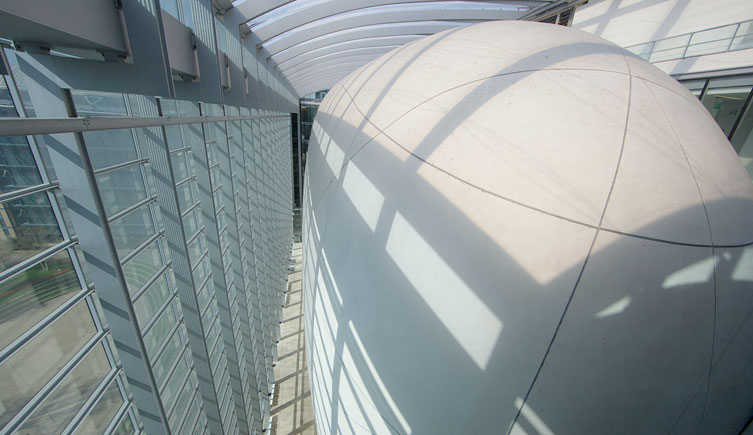 |
The Darwin Centre is a relatively recent addition to the Natural History Museum, opening to the public in 2009. The Centre is built around a eight-story display area called the Cocoon, which houses laboratories for museum scientists, as well as 3.3 kilometers of display cabinets. The Centre holds seventeen million entomology specimens and three million botany specimens. The top three floors are gallery spaces, containing specimens brought back by Charles Darwin from the Beagle voyage. The Cocoon, measuring sixty meters long, twelve meters wide, three hundred millimeters thick, and covering three thousand five hundred square meters, is the single largest sprayed concrete curved structure in Europe [8].
The Museum in Popular Culture
The Museum is an integral part of the 1975 film "One of Our Dinosaurs is Missing," in which a dinosaur from the Natural History Museum is stolen. It is a group of Chinese spies who steal this artifact, giving some insight into what nationality the villains of that time period were in the larger scope of film.
References
1. (n.d.). Retrieved May 09, 2017, from http://www.nhm.ac.uk/
- ↑ History and Architecture of the Natural History Museum. (n.d.). Retrieved May 12, 2017, from http://www.nhm.ac.uk/about-us/history-and-architecture.html
- ↑ How dinosaurs evolved into birds. (n.d.). Retrieved May 11, 2017, from http://www.nhm.ac.uk/discover/how-dinosaurs-evolved-into-birds.html
- ↑ Smith, D. (1993, November 4). Theropod Dinosaurs. Retrieved May 11, 2017, from http://www.ucmp.berkeley.edu/diapsids/saurischia/theropoda.html
- ↑ 4.0 4.1 4.2 4.3 4.4 4.5 The origin of our species. (n.d.). Retrieved May 11, 2017, from http://www.nhm.ac.uk/discover/the-origin-of-our-species.html
- ↑ "Volcanoes And Earthquakes | Natural History Museum". Nhm.ac.uk. N.p., 2017. Web. 11 May 2017.
- ↑ Science, Live. "Krakatoa Volcano: Facts About Deadly Eruption". Live Science. N.p., 2017. Web. 11 May 2017.
- ↑ "Kobe Earthquake Of 1995 | Japan". Encyclopedia Britannica. N.p., 2017. Web. 11 May 2017.
- ↑ Williams, R. (2009, September 14). Darwin Centre Opens to the Public. Retrieved May 10, 2017.
External Links
If appropriate, add an external links section
Image Gallery
If appropriate, add an image gallery
